

What is Traveling in Basketball? (Explanation & Examples)
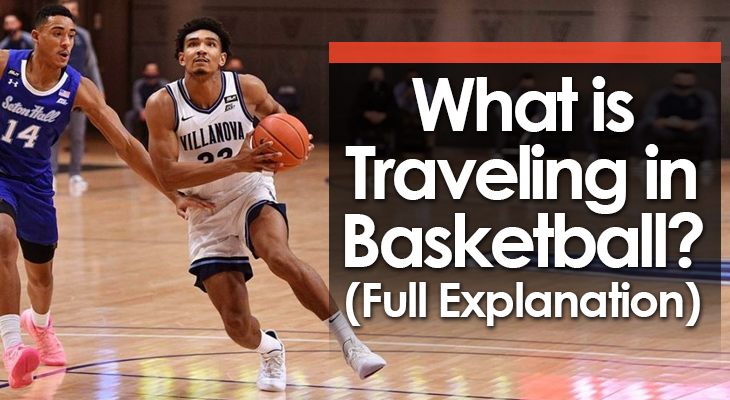
Traveling in basketball is a violation that regularly confuses people.
This isn’t all that surprising considering the rule is slightly different at the top level of basketball.
Unsurprisingly, this leads to frequent debates about whether a specific move is or is not a travel.
For example, the “ euro step ” and the “step through” frequently lead to online disagreements.
Now it’s time to end the confusion…
Below, I’ll break down exactly what traveling is in basketball.
What is Traveling in Basketball?
Here's a simple definition:
Traveling is a violation that involves illegally moving one or both feet while in possession.
In basketball, players cannot take more than two steps with the basketball in their hands.
(Unless they’re dribbling, of course)
If a player ever takes more than two steps while they have the ball, they’ll be called for traveling.
Here's a great video that goes more in-depth on the FIBA rules for traveling:
The Pivot Foot
Players establish a “ pivot foot ” when they aren’t dribbling the basketball. This is the foot that IS NOT allowed to move when the player is stationary and in possession of the ball.
Players can spin on their pivot foot, but it must remain in the same location and cannot be slid.
Players ARE ALLOWED to lift the pivot foot off the ground, but the ball must leave their hands BEFORE their pivot foot returns to the floor. Meaning they must either shoot or pass.
Why is Traveling Illegal?
To put it simply…
The traveling rule is in place to give the defensive team a fighting chance.
Think about it like this:
If the offensive team could sprint without dribbling, take unlimited steps, and change their pivot foot whenever they wish, the defensive team would have NO CHANCE of stopping the ball.
So, certain rules have been implemented to minimize the offense’s advantage.
Such as the double dribble violation , back-court violation, and traveling violation.
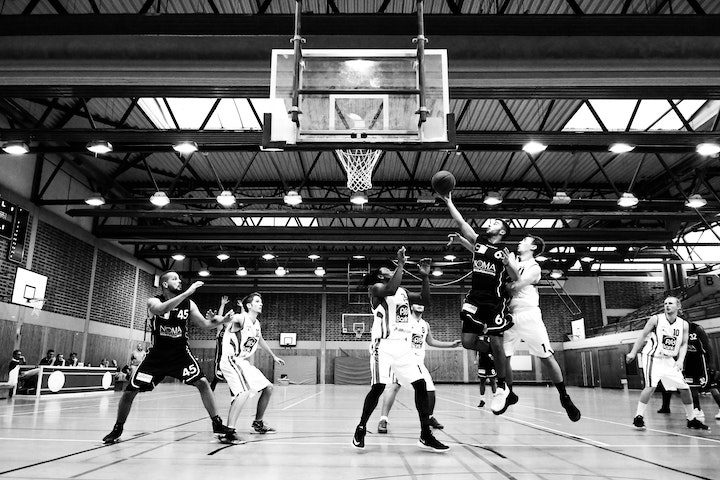
What’s the Penalty for Traveling?
Similar to a double dribble, traveling results in a dead-ball turnover by the offense.
At the college level and below, the defense will receive the ball and throw it in from the sideline or baseline, close to where the traveling violation occurred.
In the NBA, the ball is required to be inbounded between the free throw line and the baseline.
Other Examples of a Traveling Violation:
The two most common ways to be called for traveling in basketball are for taking more than two steps or for incorrect use of the pivot foot.
However, there are other ways to be called for traveling.
These include:
1. Rolling on the Floor
If a player is in possession of the basketball on the floor and they roll over with it, this will be deemed a traveling violation.
2. Jumping While in Possession
Commonly referred to as ‘up and down.’ If a player leaves their feet with the basketball (jumps in the air), they must pass or shoot it before either foot touches the ground again.
3. Passing to Oneself
If a player has possession and makes a pass to themselves (accidentally or intentionally) without any other player touching the ball, this is deemed a traveling violation.
4. Falling Down
When a player in possession of the basketball falls to the floor without a foul being committed, they will be called for a traveling violation as their pivot foot would have left the floor.
5. Sliding the Pivot Foot
Even if the pivot foot doesn’t “technically” come off of the ground, it must stay in the same spot on the floor. Sliding or dragging the pivot foot is prohibited and will be deemed a travel.
6. Stepping Before Dribbling
This is one of the most common traveling violations that you‘ll see called. When a player takes their first step, the basketball must touch the floor before their pivot foot returns to the floor.
7. Attempting to Get Up Without Dribbling
If a player has possession of the ball while on the floor, they cannot get back up with the ball unless they are dribbling. If a player stands up with the ball and they’re not, it will be called a travel.
8. Shuffling of the Feet
When a player catches the ball (especially young players), they will sometimes accidentally “shuffle” their feet. This involves moving the pivot foot, so it will be deemed a traveling violation.
Are Traveling Rules Actually Enforced?
As basketball is such a fast-paced game, catching every single traveling violation is difficult.
Especially for referees with only a few seasons of experience.
Critics of the NBA often claim that traveling is not called as often as it should be. But many of these critics aren’t aware that the NBA’s definition of traveling is slightly different than other levels. The NBA’s traveling definition is eight parts and incorporates the “ gather step .”
That said... referees are human and occasionally overlook the obvious ones:
Humor aside, if a traveling violation is missed, it’s typically because the pace of the game is so fast that the referee didn’t see it or wasn’t confident enough to make the call.
So don’t be surprised to see a few calls missed each game, as it’s such a split-second decision.
As for travels at the youth basketball level...
Referees may not be as strict on each traveling violation.
At that age, if every traveling violation was called, there would be a whistle every 5 - 7 seconds… and that’d be no fun at all.
That said, referees shouldn’t let young kids get away with everything, either…
There needs to be a balance on how much traveling is called vs let go.
As players get older, referees can and should get more strict.
Teaching Players to Avoid Traveling
For kids, figuring out the correct footwork to avoid traveling can be a long process.
At a basketball game with beginners, here are a few things you might see:
- A player starts running without dribbling the ball
- A player accidentally switching their pivot foot while in possession
- A player shuffling their feet to create space so they can pass to a teammate
“How can you team players to avoid these mistakes?”
At practices and before games, explain what a travel is and how to use a pivot foot.
When players do commit traveling violations (in practices or games), stop them and explain what they wrong, and how they can make sure to avoid that mistake in the future.
Not only does this help the player who committed the violation, but it also helps the other players who are listening as they get more reinforcement on common mistakes and what the rules are.
Will there be a lot of stoppages at the beginning?
Absolutely -- but it’s the only way for players to learn and improve.
There are also simple drills you can use at practice that work on dribbling, jump stops, and using a pivot foot. These are all fundamental skills that are necessary for players to avoid traveling.
“Traveling” in basketball is a violation that’s called when a player uses incorrect footwork.
Whether that’s taking an extra step to gain an advantage, or simply an accidental shuffle of the feet while trying to find an open teammate to pass to.
It’s a violation that will happen at least a couple of times in most games, and a coach should not gloss over it if the same type of violation occurs frequently.
Avoiding traveling is a way for teams to keep possession and get more opportunities to score.
With proper guidance in practice, players will fix their footwork and avoid traveling.
Further Reading: Basketball Rules and Regulations (Updated Version)
You may also like
What is a 3 second violation in basketball (explained), what is the restricted area in basketball (full explanation).
Last updated: Feb 09, 2024
Basketball Traveling Rules

Traveling is a violation in basketball that occurs when a player takes too many steps without dribbling the ball. The usual rule of thumb is that a player may only take two steps without dribbling; three or more steps is a travel. However, in reality, this rule is much more complicated.
Table of Contents
Traveling rules, traveling rules summary.
Traveling can be called whenever a player takes multiple steps without dribbling the ball. This can happen when a player receives the ball (while moving or stationary) or when a player starts dribbling. When a player stops dribbling, they must establish a pivot foot. A pivot foot may be turned side to side so that the player can move or find better angles, and it does not count as a travel as long as the chosen pivot foot is not lifted until the ball leaves the player’s hands.

A player may not pick up the ball, stop their dribble, and then resume dribbling. Once the ball is picked up, their options are to pass, shoot, or pivot. A pivot foot is the foot that must remain in the same spot on the floor. The other foot is allowed to move in any direction any number of times as long as the pivot foot remains put. If the pivot foot leaves the ground, it will result in a travel.
The pivot foot may move when passing or shooting, but the ball must be released before the pivot foot touches the ground again. A player can also move their pivot foot when dribbling, but the ball must be released before moving the pivot foot to avoid a traveling violation.
If a player receives the ball with two feet on the ground, either foot may be used as a pivot foot. If a player receives the ball in the air, whichever foot touches the ground first is the pivot foot. If a player receives the ball in the air and both feet hit the ground at the same time, either foot may be used as the pivot. This is known as a jump stop.
If a player is on the run and receives a pass mid-stride, they can come to a jump stop upon receiving the ball. After they stop, they must either pivot with one foot or start to dribble. A jump stop counts as one step. A player is allowed to use a pivot after a jump stop unless there was a step used to gather the ball before the jump stop occurred.
According to recent changes in the NBA rulebook, traveling rules and violations must account for steps taken while the player gathers the ball. This means that players are allowed a “gather step” to control the ball before the step count for a traveling violation can occur. The gather is defined as the point where a player puts two hands on the ball, causes the ball to pause or rest, or gains enough control of the ball to hold it, pass it, shoot it, or cradle it against their body .
Without dribbling, the first step to count towards a potential travel is the one taken immediately after the ball has been gathered. Anything past two steps after the ball has been gathered is considered traveling.
There are numerous situations in basketball that are considered traveling violations. Below is a list of examples that result in a travel:
- A player holding the ball starts walking without dribbling.
- A player receives a pass while running and takes three (or more) steps before dribbling .
- A player lifts their pivot foot or drags it on the floor without passing, shooting, or dribbling first.
- A player in possession of the ball falls to the ground.
- A player on the ground, holding the ball, stands up without dribbling.
- A player stops dribbling to shoot a layup, but they accidentally take a third step before releasing the ball.
- A player takes a step and performs a jump stop incorrectly, with their feet hitting the ground at different times, resulting in two extra steps and a travel.
- A player takes three steps after gathering the basketball .
- A player airballs a shot and catches the ball without it touching the hoop or another player.
- A player stops dribbling and passes the ball to themselves.
- A player picks up their dribble, then resumes dribbling.

The penalty for a traveling violation is a turnover to the other team. The other team will receive the ball at the out-of-bounds point closest to the spot where the travel occurred. The referee signals a traveling violation by rotating two fists around one another in front of their body. You may see fans, players, and coaches mimic this motion when they believe their opponent has committed a traveling violation.
- Traveling occurs when a player takes more than two steps after dribbling
- When a player stops dribbling, they have to establish a pivot foot
- A travel occurs when the pivot foot is lifted
- The first foot to land when a player performs a jump stop is the pivot foot
- If both feet land at the same time, either foot can become a pivot foot
- Taking any steps before dribbling the ball will result in a travel
- A travel results in a turnover
What is traveling in basketball?
Traveling is a violation in basketball that happens when a player takes more than two steps without dribbling the ball. Only players in possession of the ball can be called for traveling. When the referee calls a travel, it results in a turnover and the ball being given to the opposing team. Traveling can occur in other unique situations, all regarding illegally moving with the ball without dribbling.
Is three steps a travel in basketball?
In basketball, a traveling violation will be called when a player takes three or more steps without stopping, dribbling, shooting, or passing the basketball. When driving to the basket or picking up the dribble while moving, the player will have two steps to complete one of these actions after gathering the ball. If a player takes a third step, they will be called for a travel, resulting in a turnover.
Is a jump stop a travel in basketball?
If done properly, a jump stop is not a travel in basketball. A jump stop is when an offensive player, either with possession of the ball or after receiving the ball, lands on both feet simultaneously. If a player is on the run and receives a pass mid-stride, they can come to a jump stop upon receiving the ball. After they stop, they can pivot with either foot or start to dribble.
Can you pivot after dribbling?
Yes, you are allowed to pivot after dribbling. When a player stops dribbling, they will typically keep one foot in place as a “pivot foot,” which they will not lift off the ground again until they no longer have possession of the ball. This allows them to pivot from side to side using that foot, either to take a shot or to find an open teammate to pass the ball to. As long as the pivot foot remains stationary, traveling will not be called.
Pages Related to Basketball Traveling Rules
- Basketball Walking
- Basketball Throw Ins
- Double Dribble In Basketball
- Basketball Substitutions
- Basketball Timeouts
- College Basketball Vs. NBA Rule Differences
- About Dunkorthree.com
- Responsible Playing
- How We Rate The Books
- Affiliate Disclaimer
- Privacy Policy
- Write For Us
- 🏀 Basketball Trivia
- Michael Jordan Career Bio
- The Life & Legacy Of Kobe Bryant
- Odds Of Making It To The NBA
- Most Valuable Basketball Cards
- Why Is The Professor Not In The NBA
- ⛹️ Improve Your Game
- Basketball IQ Explained
- Improve Your Rebound
- How To Dunk
- How To Measure Your Vertical Jump
- What Is Traveling In Basketball
- Massachusetts
- Pennsylvania
- Basketball Betting
- Basketball Betting Sites
- Basketball Betting Promos
- NBA Betting Sites
- NBA Betting Promos
- March Madness Betting
- WNBA Betting
- NCAAB Betting
- Fantasy Basketball Sites
- All Betting Guides
- Parlay Betting
- Straight Betting
- Moneyline Betting
- Spread Betting
- Over-Under Betting
- All Betting Calculators
- Betting ROI Calculator
- Hedge Betting Calculator
- Odds Calculator
- Parlay Calculator
- DFS Articles
- Best DFS Sites
- New DFS Sites
- Which States Allow DFS
- College Basketball Fantasy Sites
- Sweeps Articles
- Sweepstakes Casinos
- Sweepstakes Casino Promo Codes
- Sweepstake Casino Free Spins
- Are Sweeps Casinos Legal In My State
- Sweepstakes Casino Apps
- 🏀 MARCH MADNESS
- ⛹️ LEARN & IMPROVE
What is Traveling in Basketball?
No, we’re not talking about going on a road trip to play another team at their gym or arena. The traveling we are talking about takes place on the basketball court and it is never a good thing when you or a player on your team is called for it.
If you ever watch basketball, then you have probably heard the referee blow the whistle and call “traveling”. While it is rarely called in the NBA (many feel because the referees let the players get away with it), it can be a frequent call made in lower levels of basketball, especially in youth leagues where the players are still learning.
Traveling is a violation in basketball in which the player in control of the ball, but not dribbling, makes an illegal move with their feet. A traveling violation results in a turnover, which means that the ball is awarded to the other team. Sounds pretty simple right? There are quite a few situations in which a traveling call can be made, so let’s take a closer look at what a traveling violation really is.
Facts About Traveling
There are various situations in which a traveling violation can be called. There are also many situations that may appear to be a violation but are not. The differences in rules between leagues can also be a source of confusion. Let’s take a look at some facts that are common to traveling in any situation or league.
- Most traveling calls involve the illegal movement of the pivot foot. We will discuss the pivot foot in more detail below.
- It is not possible to travel while dribbling.
- Only a player who is in control of the ball can travel.
- A player must be in-bounds in order to travel.
If you watch much basketball, you will also hear traveling referred to as “walking” or “taking steps”. “Up and Down” is also a commonly used phrase that is really just a traveling violation when a player leaves the floor and lands without passing or shooting the ball.
When we talk about traveling in basketball, we often refer to the pivot foot. So, what is a pivot foot?
The pivot foot is a single foot (can be left or right) which must remain in contact with the floor. You can think of it as an anchor to the floor. A player is allowed to spin on the pivot foot as long as it remains in the same spot and does not slide across the floor.
The pivot foot must remain in contact with the floor as long as the player has the ball and is not dribbling or jumping into the air to shoot or pass the ball. The establishment of a pivot foot is often important in determining a traveling call.
A pivot foot is established when a player is stationary with the ball (not dribbling). Once one foot is moved, the other foot becomes the pivot foot. If a player lands on one foot first, the first foot to contact the floor is usually considered to be the pivot foot.
There are situations in which no pivot foot is available, for example after a “jump stop”. A jump stop occurs when a player catches the ball while moving, contacts the floor with one foot, jumps into the air and then lands on both feet. In this case, there is no pivot foot available and the player can not move either foot.
Traveling is very dependant on the pivot foot and the establishment of a pivot foot. Pivot foot rules vary a little depending on the league and you can see more details on pivot foot establishment here .
Illegal Movements
Here are some of the common illegal movements that constitute a traveling violation in most basketball leagues.
- Lifting of the pivot foot if one has been established.and returning it to the floor before passing or shooting.
- Lifting of the pivot foot before releasing the ball to dribble.
- Lifting both feet from the floor (jumping) and returning either foot to the floor before passing or shooting.
- Dragging or sliding the pivot foot.
- Dragging or sliding either foot if no pivot foot is available.
- A fall to the floor without maintaining a pivot foot.
- Rolling on the floor.
There are other traveling violations that are specific to each basketball league. You can take a look at some of the league rules here and here you will see more descriptions of these violations.
Common examples of Traveling
Early Step – A player takes a step and lifts the pivot foot before releasing the ball to dribble. This is one of the most common violations and often happens when a player is attempting to drive to the basket from a stationary position.
Pivot Slide – A player is spinning or stretching and their pivot foot slides across the floor.
Up and Down – A player leaves the floor attempting to pass or shoot but never releases the ball and comes back down to the floor.
Three-Point Steps – A player gets the ball in front of the 3-point line and steps back behind the line to shoot without dribbling. If the player lifts the pivot foot it is a traveling violation.
Rebound Shuffle – A player gets a rebound and shuffles their feet or falls down.
There are many ways that a player can commit a traveling violation. The few we have explained above are some of the most popular ones. On the surface, it may have seemed like a traveling violation is very easy to spot but as we can see, it can be much more complicated than just a player improperly moving their feet.
The Euro-Step
A move that has become extremely popular in the NBA and basketball in general, can often look like, and be mistaken for traveling. The “Euro-Step” is a move in which a player picks up their dribble while taking a step in one direction, and then takes a second step in the other direction to avoid a defensive player. Since the second step is considered a continuation of the original move off of the dribble, it is not a violation.
According to the New York Times , the Lithuanian Sarunas Marciulionis was one of the first players to bring the move to the NBA in the 1990s. Soon after, Manu Ginobili of the San Antonio Spurs perfected this move. Since then, the Euro-step has become popular in the NBA, college and even high school. You will even see players practice it in the layup line before a game.
If you would like to see more about how to learn and practice the Euro-step take a look at this instructional video. If your still unsure about whether or not this is a legal move, take a look at the NBA Video Rule Book to see what they have to say about it.
Basketball Move: The Euro Step
Additional Resources
Understanding all of the details and rules of traveling can be very important when trying to determine a true traveling violation. Take a look at this source to see more details on rules, pivot foot establishment and things that are allowed by different leagues. You may be surprised to learn that many of the moves you think are a violation, really are legal.
If you are interested in seeing more information on the different traveling rules in different leagues take a look here for a good summary.
A visual explanation can also be helpful to see the differences in legal and illegal moves. Take a look at this video to help you visualize what a traveling violation looks like.
Traveling | Basketball
Why Travelling is so Important in Basketball
Playing basketball without committing traveling violations is one of the basic fundamentals of basketball. It is something that is taught early on when learning the game of basketball and violations are most often seen in youth and beginners leagues.
Many fans and critics may feel that professional leagues such as the NBA are allowed to frequently get away with traveling and that is why it is rarely called. In my opinion, this is a little bit of an exaggeration. While there are often missed or bad calls in the league, many times the skill of the players and their knowledge of the game allows them to make moves that may look like infractions but are really legal moves.
Do you feel the NBA allows players to get away with traveling? What is your opinion? We’d love to hear from you.
How to Replace Basketball Backboard
What are the positions in basketball, what is “clutch shooting” in basketball, best workouts and exercises for basketball players, what does hedge mean in basketball.
- Underdog Fantasy Promo Code
- ParlayPlay Promo Code
- Sleeper Promo Code
- FanDuel Fantasy Promo Code
- DraftKings Fantasy Promo Code
- Sweepstakes Casino No Deposit Bonus
- Stake.us No Deposit Bonus
- Fortune Coins No Deposit Bonus
- Wow Vegas No Deposit Bonus
- Pulsz No Deposit Bonus
- High 5 Casino No Deposit Bonus
- Fliff No Deposit Bonus
- Betting Glossary
- Half Time Full Time Bets
- Quarter Bets Explained
- Social Betting Sites
- Social Betting Apps
- Blacklisted Sportsbooks
- Fantasy Basketball Team Names
- Prizepicks Flex Friday
- Fanduel DFS Legal States
- Prizepicks DFS Legal States
Players must be 21 years of age or older or reach the minimum age for gambling in their respective state and located in jurisdictions where online gambling is legal. Please play responsibly. Bet with your head, not over it. If you or someone you know has a gambling problem, and wants help, call or visit: (a) the Council on Compulsive Gambling of New Jersey at 1-800-Gambler or www.800gambler.org; or (b) Gamblers Anonymous at 855-2-CALL-GA or www.gamblersanonymous.org.

- Motor Sports
- Fair Use Disclaimer
- Privacy Policy

Traveling in Basketball - The Ultimate Guide to the Rule
Author: pratik ghadge.
Traveling in basketball is a term that often sparks debates and confusion among enthusiasts and players alike. While many believe they have a clear understanding of what constitutes a travel, misconceptions still persist.
From the intricacies of footwork to the nuances of specific moves like the euro step and the step through, the realm of traveling in basketball is riddled with grey areas. This guide aims to demystify these ambiguities, shedding light on the true essence of the rule and the controversies that surround it.
What is Traveling in Basketball?
Traveling in basketball is one of the most discussed and often misunderstood rules in the game. At its core, traveling is defined as the illegal movement of one or both feet while a player is in possession of the ball. This violation is most commonly observed when a player takes more than the allowed number of steps without dribbling the ball.
In simpler terms, once a player has established a pivot foot, they cannot move it until they have released the ball, either by passing, shooting, or dribbling. If a player takes more than two steps without dribbling, it's considered a travel. This rule is consistent across various basketball leagues, though the interpretation might vary slightly. For instance, FIBA, the International Basketball Federation, has its own set of rules for traveling, which are often referenced in video tutorials and coaching sessions to provide clarity on the subject.
The Pivot Foot
The pivot foot plays a crucial role in the game of basketball, especially when it comes to understanding the traveling rule. Once a player stops dribbling and holds the ball, one foot becomes the "pivot foot." This foot must remain stationary until the player passes, shoots, or restarts their dribble.
The importance of the pivot foot cannot be overstated. It allows players to change direction, protect the ball, and create space from defenders. However, there are strict rules regarding its movement. Players can rotate or spin using their pivot foot, but it must remain in contact with the same spot on the floor. Lifting the pivot foot and then returning it to the floor without releasing the ball is a violation.
Understanding and mastering the use of the pivot foot is crucial in ISO basketball strategy . It not only aids in sidestepping traveling violations but also equips players with the agility to navigate around defenders, paving the way for scoring opportunities.
Why is Traveling Illegal?
The primary rationale behind the traveling rule is to maintain fairness in the game and ensure that no player gains an undue advantage. If players were allowed to move freely with the ball without dribbling, it would be nearly impossible for defenders to guard them. The essence of basketball lies in the balance between offense and defense, and the traveling rule ensures this balance is maintained.
Traveling is not the only rule designed to uphold this balance. Other violations, such as the double dribble (where a player stops dribbling and then starts again) and the back-court violation (where the offensive team returns the ball to the backcourt after advancing it), are in place to ensure that the game remains competitive and fair.
Penalties for Traveling
Traveling violations in basketball can disrupt the flow of the game and potentially change its outcome. When a player is called for traveling, they have essentially committed a turnover, handing possession of the ball to the opposing team. The immediate consequence is the stoppage of play, and the ball is awarded to the opposing team at the nearest out-of-bounds location.
The penalties for traveling play a significant role in shaping basketball's defensive strategy . Depending on the level of play, the repercussions differ. In college basketball, the defense, capitalizing on this strategic advantage, is awarded the ball and inbounds it from the closest sideline or baseline to where the infraction took place. Conversely, in the NBA, the ball is inbounded between the extended free-throw line and the baseline. Such variations underscore the importance for players and coaches to familiarize themselves with the distinct regulations of their respective leagues.
Other Examples of a Traveling Violation

While taking more than two steps without dribbling is the most commonly recognized form of traveling, there are several other actions that can result in this violation:
- Incorrect Use of the Pivot Foot : Once a pivot foot is established, it cannot be lifted and returned to the floor unless the ball has been released.
- Rolling on the Floor : If a player, while in possession of the ball, rolls over on the floor, it's considered traveling.
- Jumping While in Possession : Players who jump and then land without releasing the ball commit a traveling violation.
- Passing to Oneself : If a player throws the ball into the air and catches it without anyone else touching it, it's a travel.
- Falling Down Without a Foul : If a player falls to the ground without being fouled, and their pivot foot shifts, it's considered traveling.
- Sliding the Pivot Foot : Even slight movements or drags of the pivot foot can result in a traveling call.
- Stepping Before Dribbling : The ball must touch the floor before the pivot foot is lifted when initiating a dribble.
- Attempting to Get Up Without Dribbling : A player on the floor must dribble the ball if they attempt to stand up with it.
- Shuffling of the Feet : Any unnecessary movement or "shuffling" of the feet when receiving the ball can be deemed as traveling.
Enforcement of Traveling Rules
The fast-paced nature of basketball makes it challenging for referees to catch every traveling violation. This difficulty is especially pronounced in professional leagues like the NBA, where the speed and athleticism of players can make violations harder to spot.
Critics often argue that the NBA is lenient with traveling calls, especially with star players. However, it's essential to note that the NBA's definition of traveling, particularly concerning the "gather step," differs slightly from other leagues. Regardless of the league, referees play a crucial role in ensuring the game's integrity by making accurate and consistent calls.
Teaching Players to Avoid Traveling
For budding basketball players, understanding the nuances of traveling can be daunting. Common mistakes include shuffling feet upon receiving the ball or changing the pivot foot inadvertently. Coaches play a pivotal role in educating players about these rules.
Regular drills focusing on footwork, dribbling, and pivoting can help players internalize the rules and reduce traveling violations. Emphasizing the importance of a strong foundation in these basics ensures that players develop good habits early on, leading to fewer mistakes as they progress in their basketball journey.
You may also like : Everything You Need to Know About Suicides in Basketball
Final Thoughts
In basketball, understanding the intricacies of traveling is paramount for both players and enthusiasts. From the basics of the pivot foot to the enforcement by referees, this guide sheds light on the complexities of the rule. By grasping these nuances, players can enhance their gameplay and appreciate the sport's depth even more.


Traveling in Basketball: A Guide to Rules and Avoiding Violations
Former basketball player. Now a fan. Founder of Home School Hoops.

Ever seen a player make a great move, only to have it dismissed for ‘traveling’? Traveling in basketball is a common violation, but it is often not well understood.
Key Takeaways:
- Traveling in basketball is when a player illegally moves with the ball without proper dribbling.
- Only a player with the ball can be called for travel.
- A traveling violation results in a turnover, and the ball is awarded to the other team.
Traveling in basketball is a violation that shapes a team’s offensive efficiency and the game’s flow. Understanding it is important to both playing well and enjoying the game.
In this article, we’ll break down what traveling really means, clear up common confusions, explain why it’s important, and share tips to avoid being penalized for this common mistake.
What is Traveling in Basketball?
Simply put:
Traveling in basketball is a violation that happens when an offensive player moves their feet illegally while holding the ball.
Usually, this means taking too many steps without dribbling.
Here’s the basic idea: when you have the ball, you pick a pivot foot, which is a foot that stays in place. You can’t move this foot until you pass, shoot, or dribble the ball.
If you take more than two steps without dribbling, that’s traveling. This is a rule in all basketball leagues (NBA, WNBA, NCAA, FIBA, high school, etc.), though some details might differ a bit from one league to another.
Traveling can happen in different ways. But here are the major points to remember:
- Only the player with the ball can travel.
- Traveling is all about moving your pivot foot illegally.
- You can’t travel while you’re dribbling.
- You need to be on the court (in bounds) to travel.
In basketball, you might also hear traveling called “walking” or “taking steps.” Another term is “up and down,” which is when a player jumps and lands without passing or shooting, and that’s also traveling.
Learn more: What are field goals in basketball?
Importance of The Pivot Foot
The pivot foot plays a crucial role in basketball offensive play, especially in avoiding traveling violations and turnovers.
Think of the pivot foot as your anchor on the court. When you’re holding the ball and not dribbling, you establish one of your feet as the pivot foot. This foot has to stay planted on the floor until you pass, shoot, or start dribbling. If it doesn’t, you risk a traveling call.
Here’s how it works:
- Choosing the Pivot Foot: As soon as you stop dribbling and hold the ball, one foot becomes your pivot foot. If you land on both feet at the same time without dribbling, either foot can be chosen as the pivot.
- Moving the Pivot Foot: You’re allowed to turn or spin on your pivot foot, but lifting it off the floor or sliding it before dribbling, passing, or shooting counts as traveling.
- Switching the Pivot Foot: Once you’ve established a pivot foot, you can’t switch to the other foot. If you do, that’s traveling.
Using the pivot foot correctly is the only way to master skillful offensive play. It allows you to move strategically while staying within the rules of the game.
Common Misconceptions and Errors Involving the Pivot Foot
There are several common mistakes and misunderstandings about the pivot foot that players often encounter:
- Lifting the Pivot Foot Too Soon: It’s a common mistake to lift the pivot foot off the ground before passing or shooting. The rule is the pivot foot must stay down until the ball is passed or the shooting motion begins.
- Changing the Pivot Foot: You can’t switch your pivot foot once it’s established. Trying to do so during a play will result in a traveling violation.
- Pivot Foot and Dribbling: Some think you can move the pivot foot as you start to dribble. But actually, the pivot foot must remain stationary until the ball leaves your hand.
- Pivot Foot in Jump Stops: When landing on both feet together (jump stop), either can be the pivot. But, once established, the usual pivot foot rules apply.
- Pivoting After Stopping Dribble: Some players think that you can pivot indefinitely after stopping your dribble. In reality, once the dribble stops and a pivot foot is established, your movement is restricted.
Why is Traveling Illegal?
Traveling has been off-limits since basketball’s early days. James Naismith, the creator of basketball, listed traveling as one of his original 13 rules.
Here’s the scoop on why traveling is a violation:
- Keeping it Fair: The main reason for the no-traveling rule is fairness. It stops players from gaining an unfair offensive edge by moving wrongly with the ball. This rule gives the defense a chance and makes sure no one gets to move too far while holding the ball and not dribbling.
- Game Consistency: Traveling, like other rules such as double dribble or backcourt violation , keeps the game consistent. Players need to move the ball in a set, accepted way.
- Focusing on Skills: With rules like traveling in play, basketball becomes a game where skill, strategy, and teamwork shine. It’s not just about who can run fastest with the ball, but who’s most skilled and plays smartest.
In short, the traveling rule is there to ensure a fair and structured game where everyone plays by the same standards.
Penalties for Traveling
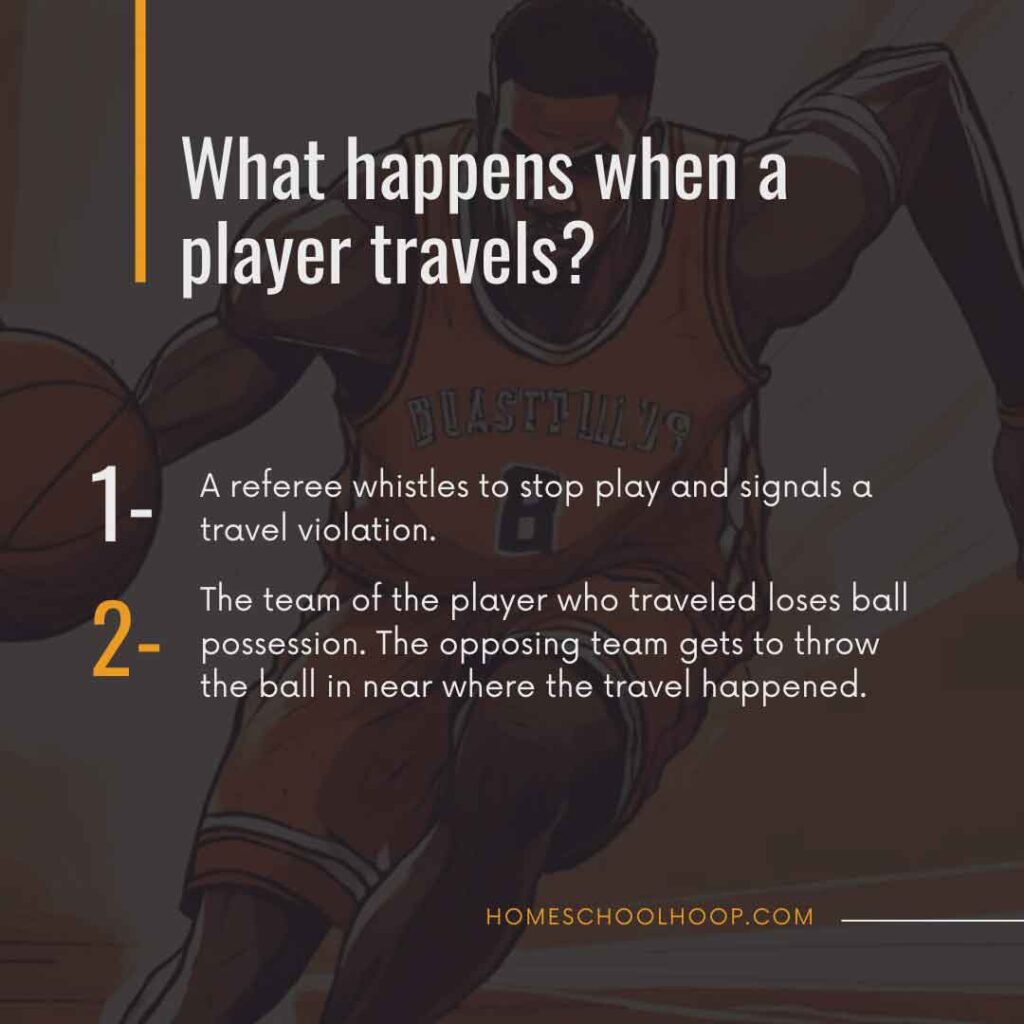
When a player travels, the game is impacted in a few key ways. Here’s what happens:
- Referee’s Call: When a player travels, the referee blows their whistle to halt the game. They then make a circular motion with their arms, signaling a travel violation to everyone watching.
- Turnover: The team of the player who traveled loses possession of the ball. The opposing team gets to throw in the ball near where the travel happened. The player who traveled is noted in the stats as having made a turnover.
Traveling violations can really change the course of the game. They stop a team’s offensive play, often when they’re in a good position to score. This not only costs the team possession of the ball but also a chance to add points to the scoreboard.
Examples of Traveling Violations
There’s not only one way to get a travel call. Here are some common ways players travel:
1. Moving Before Dribbling
The most common instance of traveling in basketball is taking a step with the basketball before the ball has left your hand for a dribble. The ball must be out of a player’s hand and on the way down before picking up the pivot foot.
2. Pivot Slides
When a player slides or drags their pivot foot along the floor without dribbling, it’s a travel. This often happens when a player is under pressure. The pivot foot needs to stay in one spot.
3. Up and Down
This is when a player jumps with the ball, usually with the intention to shoot or pass, but lands with the ball still in their hands.
4. Falls to the Floor
This happens when a player with the ball loses their balance and falls over, subsequently lifting their pivot foot, before releasing the ball.
5. Extra Steps
Taking more than two steps into a layup is traveling. This often happens after misjudging the distance to the basket or when trying to get around defenders.
6. Getting Up Off the Court
A player lying or kneeling on the court with the ball cannot legally stand up with the ball unless they’re dribbling. Otherwise, it will be called a traveling violation.
7. Switching the Pivot Foot
Once a player establishes their pivot foot, they cannot change it. Oftentimes you’ll see this with younger or newer players, where defensive pressure causes them to forget the foot they’ve established.
8. Shuffle Steps
This occurs when a player shuffles their feet before starting to dribble or while trying to create more space for an open shot.
"It looked like he did two step backs." 😂 pic.twitter.com/k0V0AQLStB — NBA on ESPN (@ESPNNBA) December 18, 2018
Note: A travel is different from a carry in basketball . A carry involves the ball-handler slipping their hand underneath the ball to temporarily pause their dribble.
Enforcement of Traveling Rules
Enforcing traveling in basketball is all up to the referees, and it can be tricky. They have a big job catching these violations, and if you’ve watched a game then you know – they don’t catch every single travel.
The referees need to watch every player closely, not only the player with the ball. Plus, the game moves fast, and sometimes illegal movement violations are missed.
Also, leagues like the NBA, WNBA, NCAA, and FIBA may enforce traveling a bit differently. For example, the NBA is notoriously lenient with traveling, particularly by the league’s top players. Whereas, leagues like the WNBA and FIBA are stricter.
And while technology like instant replay is available today to help referees make the right calls for a limited set of situations, the rules don’t allow them to review a travel call.
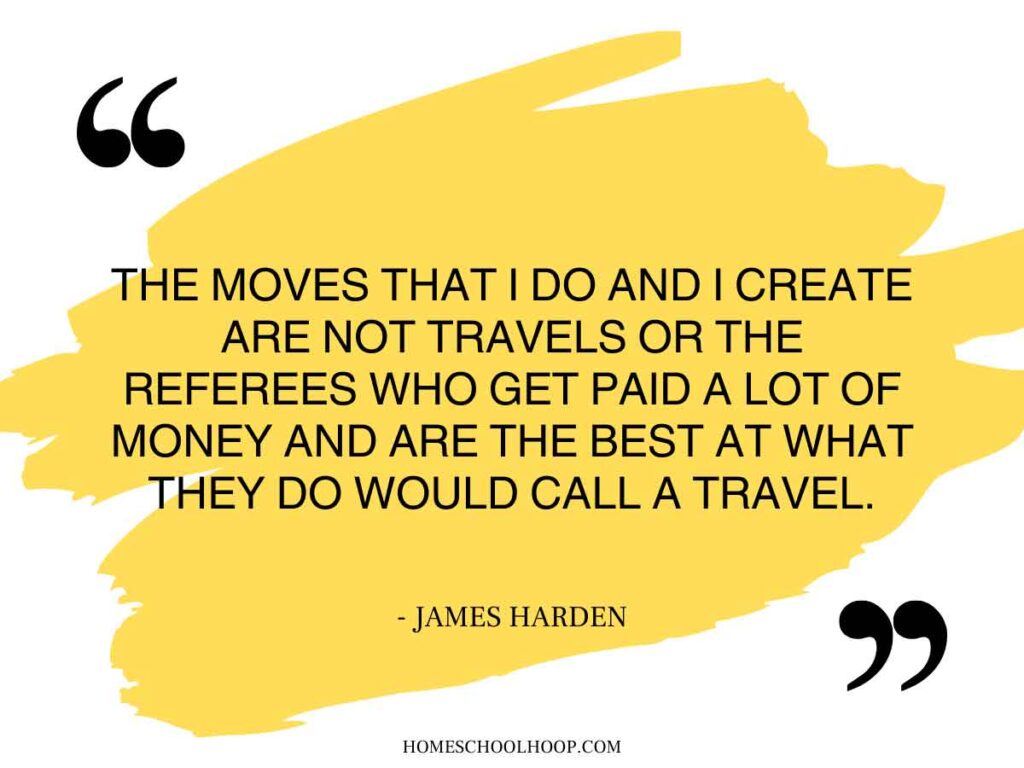
Tips to Avoid Traveling
Do you keep getting called for traveling? Here are some tips and drills to focus on:
- Footwork Drills: Start with basic footwork drills to build muscle memory. Toss the ball to yourself and catch it with either a one-two stop or two-foot jump stop while establishing a pivot foot. Practice keeping it in place while pivoting, jabbing, and pump faking.
- Pivoting Techniques: Drills that involve pivoting and passing or shooting can help you understand how to use your pivot foot without traveling.
- Slow Down: Oftentimes players travel when they try to move too fast or do multiple different things and end up with illegal movement or footwork errors.
- Game-Like Scenarios: Use drills that mimic game situations. This helps players apply the rules of traveling in the context of a real game, making it more instinctive. Organizing a basketball scrimmage with referees can also be helpful.
The Euro-Step and Its Legality
The Euro-Step is a popular offensive move, but its legality often raises questions about traveling. Here’s what you need to know:
What is the Euro-Step?
It’s an offensive move where the ball handler takes a step in one direction and then quickly steps in the opposite direction, all while advancing toward the basket. This is typically done to evade defenders and get closer to the basket for a layup.
Legal or Not?
The key is in the steps. When done correctly, the Euro-Step involves just two steps after the last dribble, making it a legal move. It’s about timing and foot placement.
To avoid traveling, players need to release the ball for a shot or pass before the foot of the second step touches the ground. If they take more steps or delay the pass or shot, it becomes traveling. When executed within the rules, it is a legal and effective move in basketball.
Understanding Different League Rules
The basketball traveling rule is generally consistent across various leagues. But, there are some minor differences.
Gather Step
FIBA rules and NBA rules on traveling are slightly different from other leagues in that officials allow for a “gather step.”
A gather step is a third step that offensive players can take after they pick up their dribble. The first step, often referred to as the “zero” step, can be followed with two additional steps in any direction when coming to a stop, passing, or shooting the ball.
The gather step is considered a travel violation at the high school and college levels. The NBA unabashedly prioritizes offense, and the league’s unique rule around this allows players to more easily position themselves to be an offensive threat.
What is traveling in basketball?
Traveling is when a player moves illegally with the ball without proper dribbling, or doesn’t establish a pivot foot correctly. It results in a turnover in basketball .
How many steps is a travel?
Taking more than two steps without dribbling the ball is considered traveling.
How many steps can you take in basketball?
You can take up to two steps in basketball while moving with the ball, after which you must either pass, shoot, or dribble.
Is 2 steps a travel in basketball?
It depends on the situation. Taking two steps while gaining control of the ball or while progressing to shoot is not a travel. However, if you already have one foot on the floor when you receive the ball, you only get one extra step.
Can you take 2 steps after catching the ball?
Yes, you can take two steps after catching the ball, as long as you either shoot or pass before the foot of the second step touches the ground.
What is a walk in basketball?
A walk in basketball is another term for traveling. It refers to moving illegally with the ball without proper dribbling.
- What is the Bonus in Basketball?
- Understanding Hand Checking in Basketball
- Complete Guide to Basketball Assists
Quadruple Doubles in the NBA: Definition, History, and Future Hopefuls
What is a Scrimmage in Basketball? A Guide to Understanding Scrimmage Basics
Leave a Comment
Level up your basketball iq.
A monthly roundup of the latest on hoop education and culture, direct to your inbox
Opt in to receive news and updates.
You have successfully joined our subscriber list.
WHERE LEARNING BASKETBALL NEVER STOPS
© 2024 HOME SCHOOL HOOP

- Strength Training
- Yoga Practice
- Sports Organizations
- Racquet Sports
- Snow Sports
- Water Sports
- Search Glass

By: James Patterson
Published: 05 October, 2022
What is Traveling in Basketball? The NBA Travel Rule and the Eurostep (with Video)
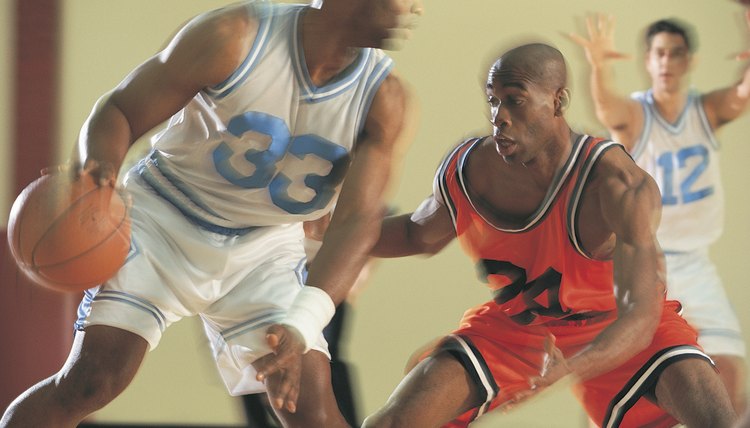
Traveling is one of the most common -- and misunderstood -- rules in the NBA and all of basketball. The traveling call is intended to prevent players from gaining an advantage by moving with the ball without dribbling. Traveling is a violation in basketball and is penalized by awarding the ball to the opposing team out of bounds closest to where the travel occurred. It is one of the most common fouls called by referees during a game, and many NCAA and NBA players have committed it throughout many games.
What is the traveling rule in basketball?
The basic concept of traveling is based on the “pivot foot”, which can be either the left foot or right foot. Once an offensive player receives the ball or picks up his dribble, he is allowed to move one foot, while the other foot has to remain on the floor as a pivot foot. This foot is allowed to rotate, as long as the ball of the foot remains on the floor at all times. A travel occurs when the player lifts the pivot foot, taking a second step, and then returns it to the floor before releasing the ball on a pass or a shot. For instance, if a player receives a pass and jumps with both feet to attempt a shot and returns to the floor without shooting, it is considered a traveling violation by the refs.
The gather step is a recent rule change in the NBA rulebook that helps to clarify what happens when a basketball player receives the ball, or takes two handed possession of the ball after the completion of a dribble. It states that “A player who gathers the ball while progressing may (a) take two steps in coming to a stop, passing or shooting the ball or (b) if he has not yet dribbled, one step prior to releasing the ball to start his dribble.” This rule has been especially controversial because James Harden is noted for using the gather step rule in his stepback jumper during many NBA games. However, it is legal because he gets control of the ball and takes two steps back, which can be seen in slow motion. The gather step goes hand in hand with the jab step move, where the player takes a step forward and then shoots it off his back foot.
What is the jump Stop?
The jump stop rule is part of the traveling rule that allows a player to make a jump stop move, which can be useful when trying to change directions quickly. According to the traveling rule, if a player, while in possession of the ball, jumps off one foot, he may then land on two feet and use either one as the pivot foot or jump again off both feet before passing or shooting the ball. However, if the player jumps off one foot and then returns both feet to the floor at slightly different times, it is considered a travel, as the first foot would then be considered the pivot foot.
The Euro Step, popularized by Manu Ginobili, is a fundamental basketball move that functions similar to the gather step and takes very good footwork to accomplish. The move is achieved when a player that is driving to the basket picks up his dribble and takes two jump steps before turning into a layup or a dunk. Since the player is gathering the ball he can use his two steps to create forward movement and use the change in speed to fool the defense.
Other Traveling Rules
There are other situations which constitute a travel that aren’t covered under the main traveling rule. For instance, if a player is standing and holding onto the ball and falls to the floor, it is considered a travel. Also, if the player is kneeling or laying on the floor and stands up without first dribbling the ball, it is also considered a travel. A player is also not allowed to touch any part of the body to the floor -- other than the hand -- while holding the ball. If he does, he will be called for a travel. If a player, without possession of the ball, slides across the floor to retrieve a loose ball, he is permitted to slide with the ball without being called for a travel.
- National Collegiate Athletic Association: Basketball Rules
James Patterson specializes in health and wellness topics, having written and produced material for the National Institutes of Health, the President's Cancer Panel and an Inc. 500 Hall of Fame company. He is also a former sportswriter with writing experience in basketball, baseball, softball, golf and other popular sports.

What Is Traveling in Basketball?
Welcome to the fast-paced world of basketball, where split-second decisions can make or break a game! Among the myriad of rules and regulations that players need to keep in mind, one of the most essential aspects to master is “traveling.” So go ahead, lace up those high-tops, and join us as we dive into the crucial topic of traveling in basketball. We’ll layup all the information you need to understand the ins and outs of this rule, ensuring your hoop knowledge stays on point and your appreciation for the game skyrockets. Get ready to slam dunk your way to sports trivia stardom!
Traveling in basketball is a violation that occurs when a player, while holding the ball, moves one or both of their feet illegally. This typically happens when a player takes more than the allowed two steps without dribbling or when they change their pivot foot. When traveling is called, the opposing team gains possession of the ball.
Mastering the Art of Legal Movement
In order to prevent traveling, it’s important to understand how to move correctly within the game. This starts with mastering the art of legal movement, which will not only help you avoid traveling violations but will also improve your overall basketball skills. In this section, we’ll outline a few essential principles that should be followed while on the court.
Establishing a Pivot Foot
The pivot foot is the anchored foot that remains stationary while the other foot is free to move. When securing the ball, observe the following guidelines to correctly establish your pivot foot:
- If both feet are on the ground when you catch the ball, you can choose either foot as your pivot foot.
- If one foot is on the ground when you catch the ball, that foot automatically becomes your pivot foot.
- When the pivot foot is already established and you lift it, you must pass or shoot the ball before that foot returns to the floor.
Learning how to pivot effectively is crucial in basketball, as it helps you create space, protect the ball, and maintain control of your movements.
Dribbling Correctly
Dribbling is an essential skill in basketball, and doing it properly is key to avoiding traveling violations. Here’s a quick refresher on the basics of dribbling:
- Use your fingertips to push the ball into the ground, not your palm.
- Keep your arm and wrist relaxed to ensure smooth and consistent dribbles.
- Bounce the ball at waist level and avoid wild, high dribbles that can be easily stolen.
- Keep your body between the ball and the defender to protect possession.
By refining your dribbling technique, you reduce the likelihood of committing traveling violations while improving your overall on-court performance.
Traveling Situations: Common Mistakes and How to Avoid Them
Now that we’ve covered the fundamentals of avoiding traveling, let’s take a closer look at some common mistakes that often lead to traveling violations. Understanding these situations will help you recognize and address them, ultimately enhancing your basketball abilities.
Moving Before Dribbling
One common traveling mistake occurs when a player moves their pivot foot or takes a step before dribbling the ball. To avoid this, ensure you start your dribble before your pivot foot leaves the ground. A good tip is to use a “step-dribble” motion – as you initiate the dribble, step with the non-pivot foot, and allow your arm motion to guide the ball towards the floor.
Illegal Jump Stops
A jump stop involves catching the ball while jumping and landing on both feet simultaneously. It can be a useful move, but if executed improperly, it can lead to traveling violations. The key is to establish a pivot foot immediately after landing. To avoid jumping too high or far, practice the jump stop using small, controlled hops rather than exaggerated leaps.
The “Uncatchnable” Pass
In basketball, players often utilize a no-look or over-the-shoulder pass when they’re in a tough spot. Unfortunately, this can sometimes result in the ball-holding player’s foot or body moving unexpectedly as they try to catch the pass, resulting in a traveling call. To prevent this, work on communicating with your teammates, using clear hand signals and verbal cues. Ensure your awareness of your body position to avoid any unnecessary movements when receiving the ball.
Too Many Steps for a Layup
When executing a layup, it’s crucial to remember that players are allowed only two steps before releasing the ball to avoid a traveling violation. Ensure proper footwork by practicing the one-count layup. Start by taking one strong step with the non-shooting foot, then gather the ball and bring it to a shooting position, and finally complete the second step by jumping off the shooting foot, laying up the ball. As you become confident in your one-count layup, gradually increase your speed to make the move more seamless and effective.
Advanced Techniques for Navigating Traveling Rules
Once you’ve grasped the fundamentals of pivot footwork, dribbling, and common mistakes leading to traveling violations, you can start experimenting with advanced techniques that will help you further enhance your basketball skills. In this section, we’ll discuss some advanced moves that can be mastered while avoiding traveling violations.
The Euro Step is a popular move used to evade defenders in the paint. The key is to execute this move within two steps to avoid a traveling violation. To perform the Euro Step, take your first step in one direction, then quickly shift your body weight and take the second step in the opposite direction before laying up the ball. By practicing this maneuver, you can become a more unpredictable and effective player around the rim.
Step-Throughs
Step-throughs are used to fake out defenders after picking up your dribble. To execute a step-through, first anchor your pivot foot securely. Then, use your body to sell the fake by shifting weight towards the shooting side, extending the ball as if you’re about to attempt a shot. As the defender reacts, bring the ball back and step through with the non-pivot foot, creating an open pathway to the hoop. Remember to complete the step-through without lifting your pivot foot, as doing so would result in a traveling call.
A spin move is a powerful offensive technique that leaves defenders guessing where you’ll go next. To avoid traveling while executing a spin move, ensure that one foot remains anchored as your pivot point. As you spin your body, take a step with your non-pivot foot while keeping the pivot foot stationary. Then, use your body’s momentum to complete the spinning motion and find an open lane to the basket. Practicing spin moves will give you more offensive options and make it difficult for defenders to predict your next move.
Understanding Traveling Violation Penalties and How to Adapt
Every basketball player is bound to encounter a situation where traveling is called against them. It’s essential not to let these calls affect your mindset or playstyle. Being aware of the penalties for traveling violations will help you respond more effectively and adapt to the game’s flow.
Penalties for Traveling Violations
When a traveling violation is called, the team that committed it loses possession of the ball, and the opposing team gains control through an inbounds play. Though traveling violations don’t directly affect personal or team foul counts, turnovers can significantly impact the game’s outcome. As such, it’s essential to stay focused and not let a traveling call affect your performance negatively.
Adapting Your Style
In basketball, it’s vital to adjust your style of play to work within the rules and avoid unnecessary traveling calls. This can mean refining your footwork, improving body awareness, and developing a more controlled pace of play. Experiment with different offensive techniques, master pivot footwork, and work on balancing patience with aggression in your movement. By doing so, you’ll become a more versatile and resilient basketball player.
Traveling in basketball is a key concept that every player must understand and strive to avoid. By mastering proper footwork, dribbling techniques, and staying mindful of common mistakes leading to traveling violations, you’ll become a more effective and confident player. Remember, greatness takes time, and it’s essential to practice consistently, incorporating the lessons learned from mistakes along the way. With dedication, hard work, and a growth mindset, you’ll undoubtedly excel both on and off the basketball court.
Critical Skills for Effective Footwork
As we’ve seen, footwork is crucial for avoiding traveling violations and improving overall basketball performance. In addition to understanding pivot footwork and dribbling techniques, there are several other skills you should work on developing to strengthen your footwork game.
Jump-Stop Footwork
Jump-stop footwork can help you maintain your balance and control, making it easier to avoid traveling violations. To practice jump-stop footwork, focus on landing on both feet simultaneously while keeping your knees slightly bent. This will allow you to easily establish your pivot foot upon landing and enable smoother transitions between movements.
Agility Drills
Developing quick, agile movements will improve your overall footwork in basketball. Implement agility drills, such as ladder drills, cone hops, slide steps, and backpedals, to enhance your speed and reaction times. These drills train your feet to remain in contact with the floor, ultimately reducing the chances of traveling violations and increasing your effectiveness on the court.
Lateral Quickness
Lateral quickness helps you change directions rapidly, a prized ability for offense and defense alike. Effective footwork in lateral movements is essential to avoid dragging or lifting your foot improperly, leading to traveling violations. Incorporate side-to-side shuffles, defensive slides, and lateral plyometric exercises into your routine to hone lateral quickness and agility.
Analyzing the NBA’s Most Prolific Travelers
The study of professional basketball games can yield priceless insights for aspiring players. Analyzing how even the best of the best sometimes commit traveling violations is an opportunity to learn from their mistakes and employ solid expertise in your own game. Here are a few examples of traveling from NBA players that provide educational moments.
James Harden’s Step-Back Move
James Harden is renowned for his signature step-back move. However, referees have occasionally called traveling violations for this maneuver. By examining instances of Harden’s step-back move called for a travel, players can gain insights into the importance of properly establishing a pivot foot, as well as the legality of the move when executed appropriately.
LeBron James’ Gather Step
LeBron James, one of the game’s most celebrated stars, has also faced the occasional traveling violation. In several NBA games, LeBron has taken an additional “gather step” while driving to the basket, resulting in a traveling call. This provides a valuable lesson on avoiding unnecessary steps that can lead to turnovers and penalties.
Additional Traveling Rules in Pro Basketball: Differences in NBA, FIBA, and NCAA Regulations
While the basic concept of traveling remains largely the same across different basketball organizations, some specific rules may vary depending on whether you’re playing under NBA, FIBA, or NCAA regulations. Knowing these differences will help you better understand and prepare for the variations you might encounter at various basketball levels.
NBA Traveling Rules
The NBA traveling rules generally allow more leniency than FIBA and NCAA. For example, when initiating the dribble in the NBA, players are granted a small step called the “gather step.” This allows them to perform a step-back move, which is not specifically mentioned in FIBA or NCAA rulesets.
FIBA Traveling Rules
International games, governed by FIBA, have stricter rules regarding traveling, especially when catching the ball on the move. FIBA also stipulates that players must establish a pivot foot upon catching the ball, whereas the NBA allows a slight delay in establishing the pivot.
NCAA Traveling Rules
Collegiate basketball, regulated by the NCAA, adheres to a more rigid interpretation of traveling. NCAA traveling rules are more similar to FIBA than the NBA, reinforcing the importance of proper footwork and understanding pivot foot dynamics.
In summary, being aware of traveling rule nuances across different basketball organizations will help you adapt your game accordingly and enhance your versatility as a player.
FAQ Section: Traveling in Basketball
We’ve compiled a list of frequently asked questions to address any lingering queries you may have regarding traveling in basketball. Enhance your understanding and quench your curiosity with these concise NLP-style answers to common questions on this topic.
1. What is the fundamental difference between traveling and double dribbling?
Traveling is a violation that occurs when a player moves their feet illegally while holding the ball, while double dribbling occurs when a player stops their dribble, holds the ball, and starts dribbling again without passing or shooting.
2. Does a player need to establish a pivot foot after receiving the ball?
Yes, a player must establish a pivot foot immediately after receiving the ball to avoid a traveling violation.
3. Is it considered traveling if a player slides or stumbles while maintaining their dribble?
As long as a player maintains their dribble and doesn’t pick up the ball, sliding or stumbling is not considered a traveling violation.
4. Can a player change their pivot foot legally after picking up their dribble?
No, once a pivot foot is established, it is illegal to change it without committing a traveling violation.
5. How many steps can a player take without dribbling?
A player can take up to two steps without dribbling before being called for traveling. Any additional steps without dribbling result in a traveling violation.
6. When executing a euro step, how many steps are considered legal?
A euro step can be legally executed within two steps, allowing the player to shift directions and evade defenders without committing a traveling violation.
7. Is it considered traveling if a player falls to the ground while holding the ball?
Falling to the ground while holding the ball is considered traveling if the player attempts to stand up or roll over without first passing or shooting the ball.
8. Can a player jump and land without releasing the ball?
A player can legally jump and land without releasing the ball only if they land with both feet simultaneously, thereby establishing a new pivot foot.
9. How can a player avoid the most common traveling mistakes?
A player can avoid common traveling mistakes by practicing proper footwork, dribbling techniques, and maintaining awareness of their body movements on the court.
10. Are traveling rules identical in the NBA, FIBA, and NCAA?
Although the basic concept of traveling remains consistent, there are minor rule variations depending on the organization (NBA, FIBA, or NCAA), such as the allowances for gather steps or establishing pivot feet.
11. Can a player slide on their knees and pass the ball without committing a traveling violation?
As long as the player does not attempt to stand up, roll over, or move their pivot foot while sliding on their knees, they can pass the ball without committing a traveling violation.
12. Is the step-back move considered traveling?
The step-back move is not considered traveling if executed within the boundaries of the rules, meaning the player maintains their pivot foot and does not exceed the allowed steps.
13. How can a player practice pivot footwork to avoid traveling violations?
A player can practice pivot footwork by jumping rope, performing agility drills, or rehearsing individual moves like spin moves, euro steps, or step-throughs, all while emphasizing the importance of properly maintaining their pivot foot.

Understanding Traveling In Basketball
Basketball traveling is a violation in the game of basketball . This article aims to explain traveling violations, what traveling is, and how traveling can be called during a match . All possible scenarios will be included so that you know exactly when traveling should be called.
What is Traveling in Basketball?
Traveling in basketball is a violation. It’s when a player dribbles the ball and takes too many steps without dribbling or passing it to another teammate . This traveling violation can also be called when the offensive player has taken several steps after starting to dribble.
Basketball traveling can also be defined as an infraction, where players who are holding onto the ball must not move their pivot foot from the ground before releasing the ball to another player.
The traveling violation is a formal rule in basketball . The traveling call can be called by the referee when he/she sees an infraction occur.
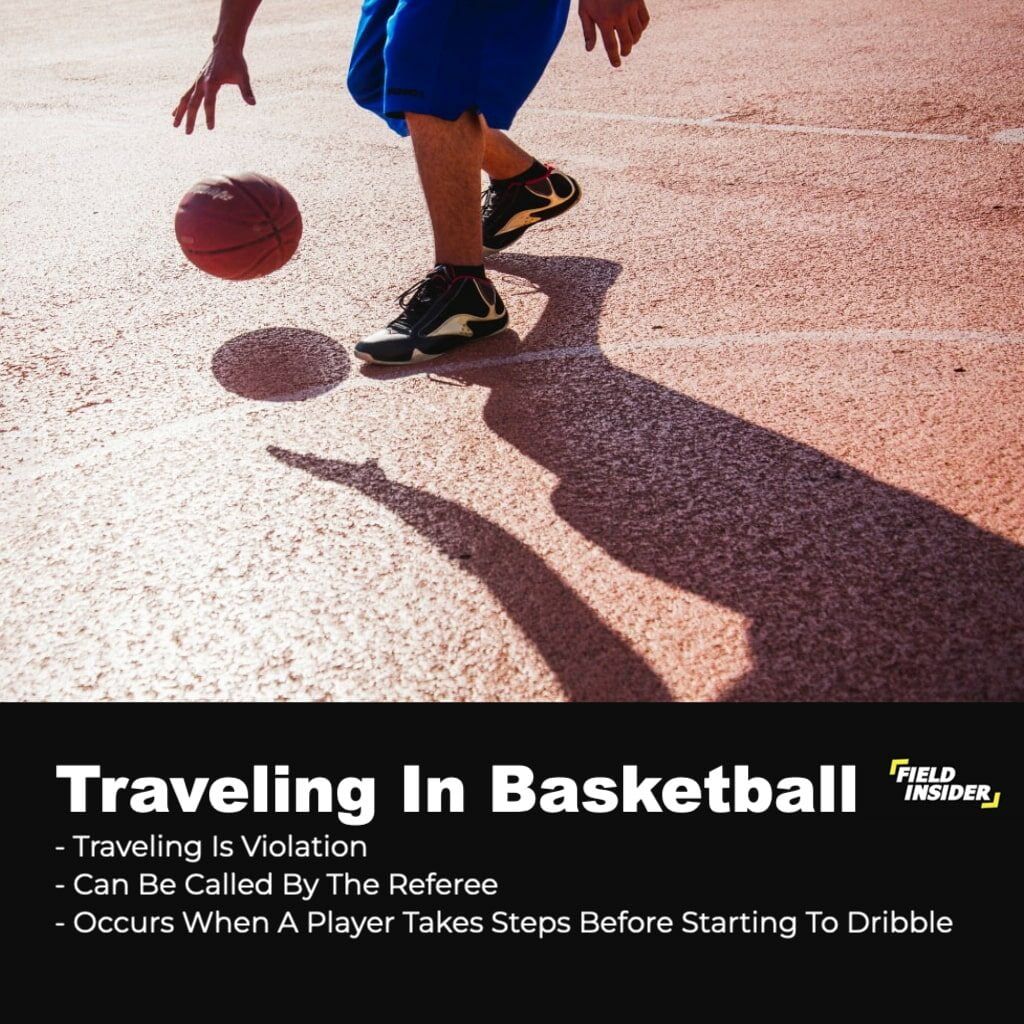
Examples of Footwork in Basketball
A basketball move known as the Euro step, two-step, or long lateral involves an offensive player picking up their dribble, taking a step in one direction, and then rapidly taking another stride in a different direction. It is meant to provide the offensive player a chance to get away from a defender and go for the basket.
Although the NBA used the Euro step frequently prior to 2009, it did not become legally acceptable until that year. The NBA rulebook had always stated that a player may only take one step before 2009. A player may take two steps to stop moving, pass the ball, or shoot the ball after receiving the ball while moving or after finishing a dribble, according to a 2009 amendment in the rule. “It is thought to be the first league, at any level, anywhere in the world, has officially authorized two steps,” ESPN said at the time the change was made.
Gather Step
For a player who receives a pass or gains possession of a loose ball, the gather is defined as the point where the player gains enough control of the ball to hold it, change hands, pass, shoot, or cradle it against his body.
For a player who is in control of the ball while dribbling, the gather is defined as the point where a player does any one of the following:
- Puts two hands on the ball, or otherwise permits the ball to come to rest, while he is in control of it;
- Puts a hand under the ball and brings it to a pause; or
- Otherwise gains enough control of the ball to hold it, change hands, pass, shoot, or cradle it against his body.
A player who gathers the ball while progressing may (a) take two steps in coming to a stop, passing or shooting the ball or (b) if he has not yet dribbled, one step prior to releasing the ball to start his dribble.
Step-back Shot
The Step Back is a “counter move.” It is used only after the initial drive is stopped. You must force the defender to stop the drive first by trying to get by him with your drive.
This move is most effective around the basket, in the lane, or inside 15 feet. Once you move beyond that range, it becomes a very difficult and low-percentage shot. It should not be a staple of a player’s perimeter offense, but can be an extremely valuable weapon in the paint.
Here are the steps to properly execute a step-back:
- Attack The Defender First
- Get Into The Defender
- Press Off The Front Foot
- Land On Back Foot First
- Keep Shoulders Forward
- Straight Up On The Shot
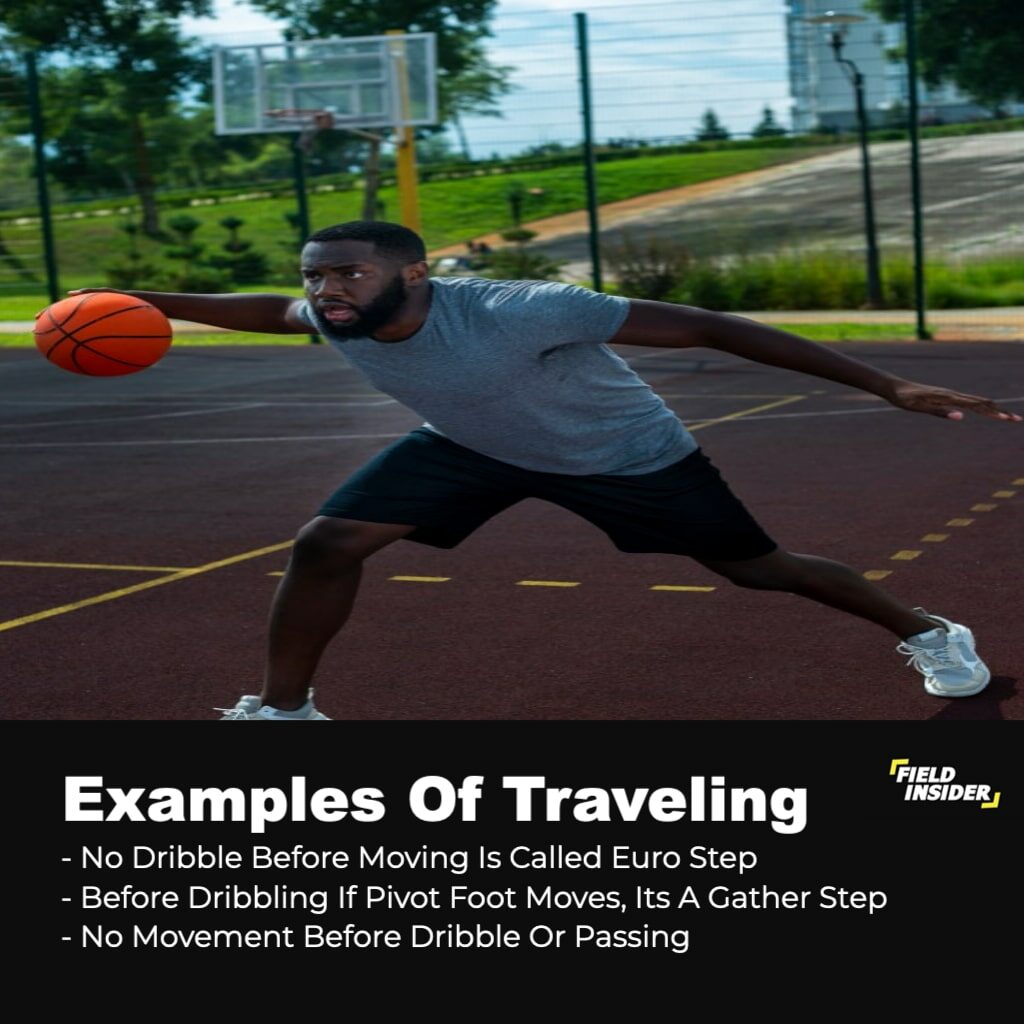
When the offensive player receives the ball in the low post, he or she either fakes in one direction before spinning in the opposite direction, goes up for the shot right away after receiving it, or takes one hard dribble before taking it.
Up-and-Under
A shot fake (the up) and a step-through make up the technique known as the up and under (the under). The offensive player advances past the defender and attempts a clear, undefended shot after the ball carrier first fakes a shot by raising the ball above their head in an apparent attempt to take a shot.
Hakeem Olajuwon and Kevin McHale were regarded as masters of this move, which is typically performed by post players (power forwards and centers).
When a post player drives alongside the baseline, fakes a layup with one hand beneath the ball while pivoting to the outside for a jump hook, this move is also referred to as “The Dream Shake” after Hakeem “The Dream” Olajuwon. The post man can pump fake the hook and step through for the undefended layup if the opponent recovers and jumps at the hook shot.
A player takes a jab step, also known as a side step, when they hold onto the ball while dribbling and move their non-pivot leg in a forward or side motion.
This technique is utilized to evaluate the defensive posture and gaps of the defender. The jab step can be used in conjunction with the pump fake, drive, shot, and crossover drive to entice the opponent out of their defense.
Both forward Carmelo Anthony and the late great Kobe Bryant have a reputation for using the jab step. A distance is created between the player and the defender as a result of the player doing this, allowing them to quickly shoot a mid-range jump shot, a three-pointer, or a drive “to the lane.”
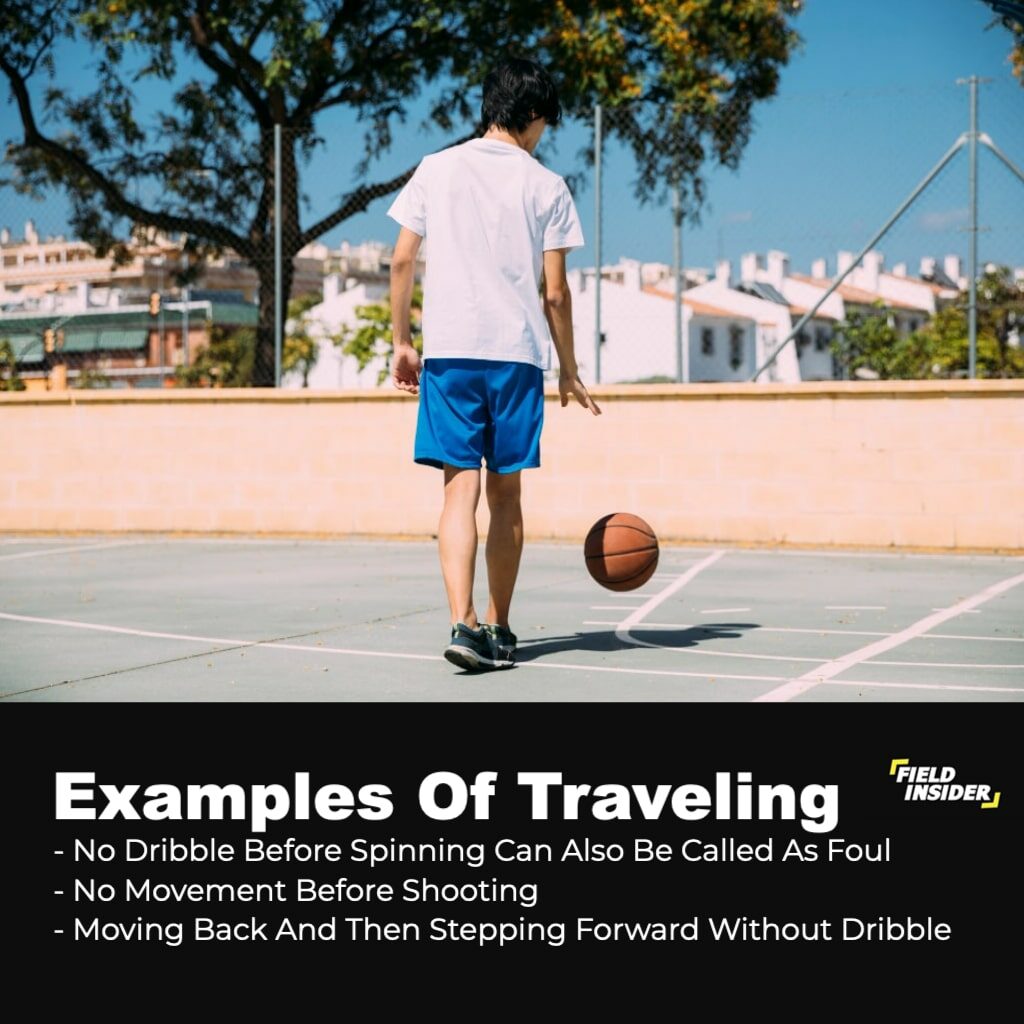
What Happens When a Traveling Violation is Called?
Basic traveling violations that occur when traveling is called are turnovers and traveling calls for players on offense or defense. Hence, a traveling violation calls for possession of the ball to go over from one team to another, and play continues following this turnover under the official’s discretion.

NBA Rules about Traveling in Basketball (Rule No. 10 Section XIII – Traveling)
a. A player who receives the ball while standing still may pivot, using either foot as the pivot foot
b. A player who gathers the ball while progressing may take (1) two steps in coming to a stop, passing or shooting the ball, or (2) if he has not yet dribbled, one step before releasing the ball. A player who gathers the ball while dribbling may take two steps in coming to a stop, passing, or shooting the ball.
- The first step occurs when a foot, or both feet, touch the floor after gaining control of the ball.
- The second step occurs after the first step when the other foot touches the floor. Or both feet touch the floor simultaneously.
- A player who comes to a stop on step one. When both feet are on the floor or touch the floor simultaneously may pivot using either foot as his pivot. If he jumps with both feet he must release the ball before either foot touches the floor.
- A player who lands with one foot first may only pivot using that foot.
- A progressing player who jumps off one foot on the first step may land with both feet simultaneously for the second step. In this situation, the player may not pivot with either foot and if one or both feet leave the floor the ball must be released before either returns to the floor.
c. In starting a dribble after (1) receiving the ball while standing still, or (2) coming to a legal stop. The ball must be out of the player’s hand before the pivot foot is raised off the floor.
d. If a player, with the ball in his possession, raises his pivot foot off the floor. He must pass or shoot before his pivot foot returns to the floor . If he drops the ball while in the air, he may not be the first to touch the ball.
e. A player who falls to the floor while holding the ball. Or while coming to a stop, may not gain an advantage by sliding.
f. A player who attempts a field goal may not be the first to touch the ball. If it fails to touch the backboard, basket ring, or another player.
g. A player may not be the first to touch his pass. Unless the ball touches his backboard, basket ring, or another player.
h. Upon ending his dribble or gaining control of the ball. A player may not touch the floor consecutively with the same foot (hop).
- PENALTY: Loss of ball. The ball is awarded to the opposing team on the sideline. The nearest spot of the violation but no nearer the baseline than the foul line extended.
Conclusion
We hope to have answered any questions you had about this topic, but if not please let us know. Do you agree with these rules? or do they make it too difficult for players to get open shots off of drives and cuts? Let us know below! Are you interested in more awesome stuff about basketball? Explore our entire section about it here .
BECOME AN INSIDER.
Enter your email to join our community.
I'm the 25-year-old former footballer, who could have gone pro was it not for my knee injury! Never heard that before, have you? Jokes aside, my life nowadays really revolves around work, fitness, watching A LOT of sports and spending time with the ones I love (add blogging to that!).
Similar Posts

How To Improve Your Weak Hand In Basketball
You may be struggling to improve your weak hand in…

Who Are The NBA Teams In California?
California is a huge state in the United States. And…

What Is An Open Look In Basketball?: The Basic Knowledge
In basketball, an open look occurs when the defender is nowhere near the offensive player and is all alone for a good…

How Long Is A High School Basketball Season?
Teams play for around 5 months throughout the high school…

Jerry West: The Player As The Silhouette In The NBA Logo
Jerry West, the NBA logo silhouette and Los Angeles Lakers…

How Much Does NBA Commissioner Make: Roles & Duties
The NBA Commissioner, the league’s highest-ranking official, earns a salary…

What Is A Travel In Basketball? NBA, NCAA, FIBA
Basketball is a game with so many rules that may vary regarding how competitive the level of competition is. Failure to follow these rules and regulations will prompt a game official or the referee to blow their whistles and penalize the team. One of the most prominent violations that are often called for is the traveling violation.
So, what is traveling in basketball, and how can a player avoid getting called with this violation?
Traveling is a violation called when a player illegally moves one or both feet while holding or dribbling the ball beyond the allowed steps. A typical example of traveling is a player who steps three times after gathering the ball. There are different traveling rules in various leagues today.
Now, let us explore what traveling is and how to avoid it.
Table of Contents
What is Traveling in Basketball?
Traveling, also called walking or simply ‘travel,’ is a violation in basketball. The most basic definition of traveling is taking three steps without dribbling the ball. Another common reason for traveling is lifting or moving the established ‘pivot’ foot without shooting or passing the ball – which we will discuss later.
There are other ways for a referee to call the violation if you’re not careful and depending on which league you are playing. The penalty for a traveling violation is a turnover or changing of the ball possession. For high-level players, it is embarrassing to be called with travel.
The universal hand signal for traveling is that the referee will place his hands one after the other in front of him while rolling or spinning.
Since a subjective referee calls many violations in basketball, there are still times when they will miss the right call for the violation.
Travel Rules in Different Levels of Basketball
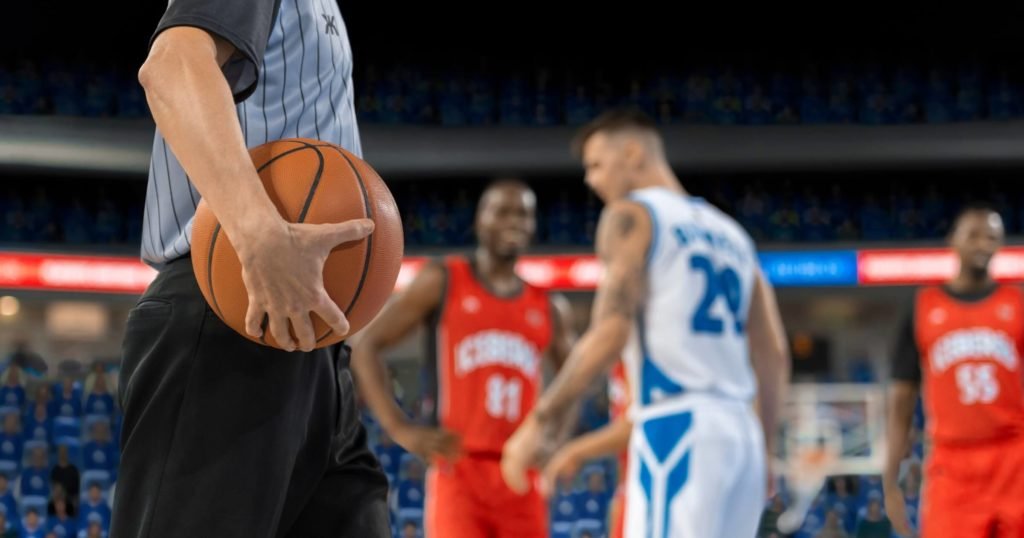
While the traveling violation applies to all basketball leagues, there may still be some variations depending on the level of play they’re in. here are some:
The NBA is one of the world’s most prominent professional basketball leagues. However, even at that level, many players still commit traveling violations. According to the NBA Rule Book, here are some considerations and rules for traveling.
- If a standing player receives the ball can still pivot.
- A moving and dribbling player can take two additional steps to a stop – even without dribbling the ball. He may then choose to shoot or pass the ball.
- If a player receives the ball while standing or coming to a legal stop, he must pass or shoot the ball before he can raise his pivot foot.
- A player should shoot or pass the ball if he raises his pivot foot. Suppose he loses the ball in the air; he can’t touch the ball first.
- If a player holding the ball falls to the ground, he can’t get an advantage by sliding on the floor.
- If a player attempting to shoot the ball misses the basketball ring, the backboard, or another player (blocked), he can’t touch the ball first.
- A player can’t pass to himself without the ball touching the ring, backboard, or another player (assist) .
- A player can’t hop twice.
However, while these are the rules of the NBA, frequently, they are not appropriately enforced, especially for superstar players.
FIBA rules are the official guidelines for international basketball, aside from North America, which commonly follows the NBA, NCAA (college), and NFHS (high school) rules. These are some of the rules per FIBA Official Basketball Rules 2018.
- For standing players receiving the ball with both feet on the ground:
- The other foot automatically becomes the pivot foot if one foot is lifted.
- If a standing player wants to dribble the ball after catching it, he can do so but still can’t lift his pivot foot.
- He can pass or shoot the ball, but if he wants to jump with his pivot foot, he should not land again holding the ball.
- Players catching the ball while he is moving or dribbling can still take two steps before coming to a complete stop, shooting, or passing the ball.
- It is legal for players to fall or slide on the floor while holding the ball or trying to get possession of the ball.
- It is illegal for players to roll or attempt to stand up while holding the ball.
NCAA is the governing body for collegiate competitions in the US and Canada. In basketball games, most travel rules are like the professional leagues, but with some variations.
- A traveling violation happens if a player moves one or both feet in any direction up to a specific limit.
- If a standing player with both feet on the court catches the ball and moves one foot, the other will automatically be the pivot foot.
- It is traveling if a player falls to the floor without maintaining a pivot foot while holding the ball.
Common Examples of Traveling
- If a player moving toward the basket gathers the ball and takes three steps.
- If a player fails to release the ball during a jump shot attempt in fear of his shot getting blocked returns to the ground while still holding the ball.
- If a player moves his established pivot foot in an attempt to move away from a defender.
What is the Pivot Foot?
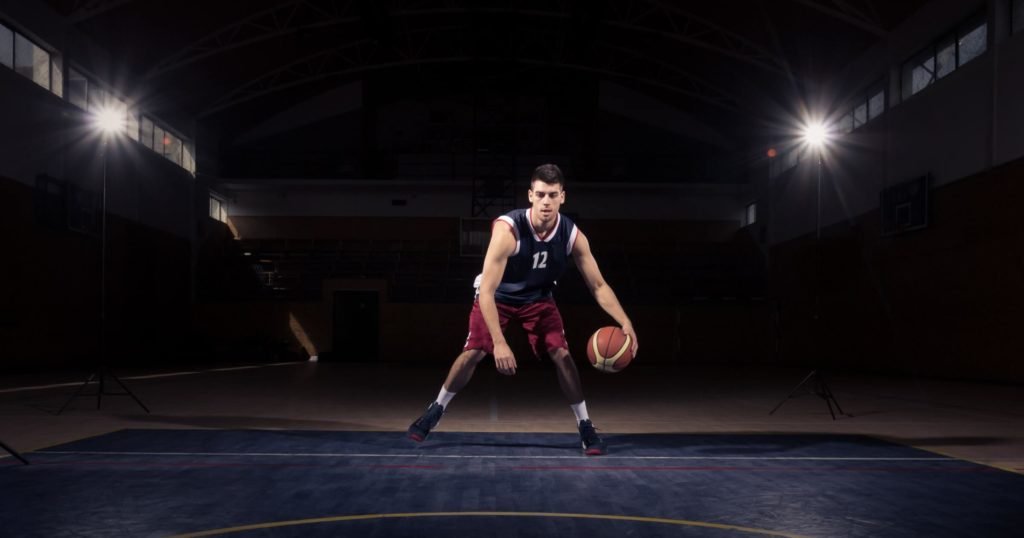
The pivot foot is one of the offensive player’s feet that should always maintain contact with the ground. Since it is named with ‘pivot,’ a player can rotate or turn side to side using his other foot while always maintaining his pivot foot pinned to the ground.
A player can only lift his pivot foot if he is shooting or passing the ball. So, if a player jumps but fails to release the ball and his pivot foot touches the ground again, he will be called a traveling violation.
The best post players can use their pivot foot to their advantage to score near and around the basket. Some players who can best use their pivot foot to score are Hakeem Olajuwon, Michael Jordan, Carmelo Anthony, and Kobe Bryant.
What is a Gather Step in Basketball?
The ‘gather’ step is called the “zero steps,” or a “third step” after a player picks up their dribble. It has been legal in FIBA since 2018.
In 2019, the NBA revised its rule book to define gather concerning the traveling violation, which is:
- Suppose a player receives a pass or takes control of a loose ball. In that case, the gathering happens when a player gets enough control of the ball, changes hands, passes, shoots, or even holds it against his body.
- If a player is dribbling, the gather happens in one of these scenarios:
- Puts two hands on the ball;
- Puts a hand under the ball and stops it;
- Or once he receives enough control for the ball to pass, shoot, or hold against his body.
The problem with the gather step is that many young players in high school or NCAA tries the gather step without knowing that it is illegal in their respective leagues.
4 Simple But Effective Tips to Avoid Traveling
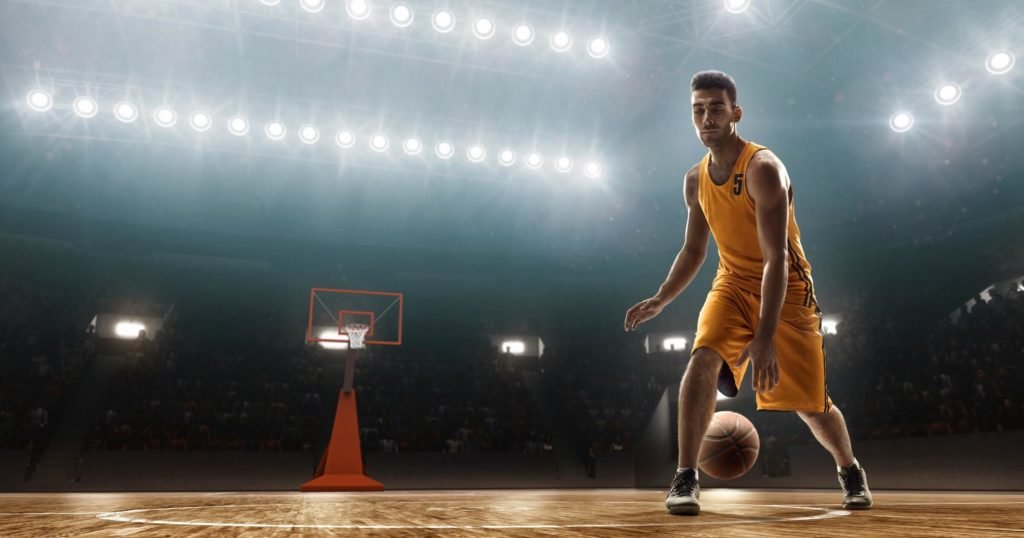
1. Be mindful of your pivot foot.
Most traveling violations are called if a player moves his pivot foot illegally. So, learning to be more mindful of which foot to move will save you and your team a few turnovers due to traveling.
2. Don’t be afraid of getting blocked .
Blocked shots are routine in basketball, but some players are afraid to have their shot blocked, so they prefer to get a traveling violation instead.
3. Max of two steps.
Another common reason for traveling is to take more steps than required. Though some players can get away from mannerisms with their steps, it is still better to be careful with your steps.
4. Practice. Practice. Practice.
Like anything in basketball, a lot can be improved through practice. By practicing moving toward the ring and stepping only twice or mastering the pivot foot, in time, the habits will be incorporated into your game.
Some Clarifications Regarding Traveling
- You will never travel while dribbling the ball. The height and steps per dribble are not necessary. Think of quicker NBA players who usually step at least three times in-between dribbles.
- The step length is also irrelevant as long as the rules are followed. Think of Giannis Antetokounmpo’s two steps from the three-point line for a dunk .
- There is no traveling during out-of-bounds or throw-in.
- A player who has not fully controlled the ball, like fumbling, cannot be called for a traveling violation.
Traveling is one of the most common basketball violations, but it is easy to avoid if you know the rules of your game. Practicing proper mechanics in basketball like dribbling, footwork, and movements can be translated into actual actions during a game.
A traveling violation is not as simple as getting a turnover. In high-pressure moments, even NBA players were called traveling and lost crucial possessions.
Read these next:
- What is an Illegal Screen in Basketball? Explanation + Tips
- What is the Backcourt in Basketball: Term and Violation
- What Does Bonus Plus Mean in Basketball: Simple Explanation
Leave a Comment Cancel reply
Save my name, email, and website in this browser for the next time I comment.
What Is Traveling in Basketball?
By Max Kesler
Updated February 11, 2022
No Comments
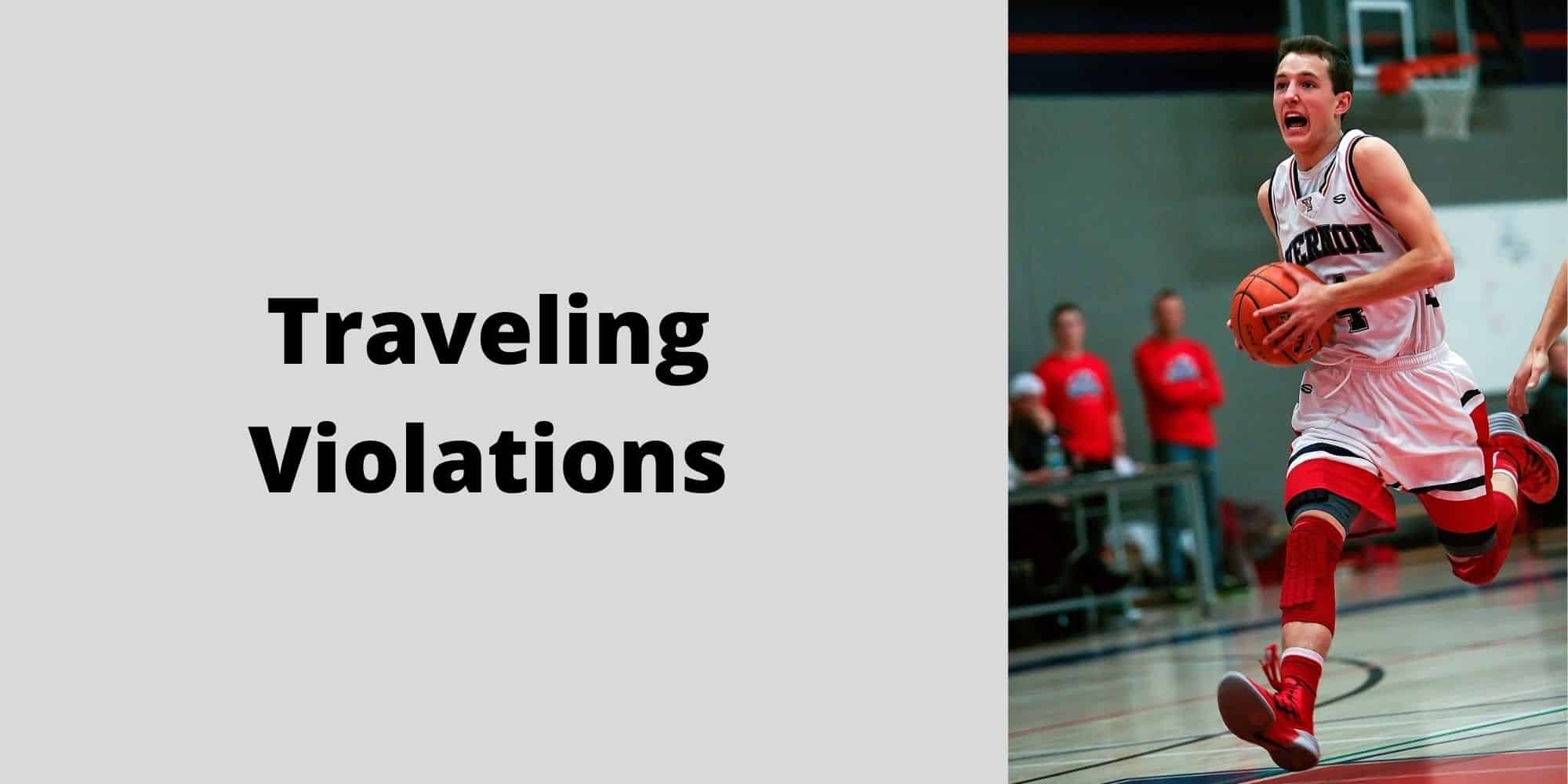
Yes, basketball can take you around the world, but when we speak of traveling in basketball we are usually talking about the rule that many seem to have forgotten.
It’s one of the most basic rules of the game. Players learn it from the very beginning along with the game’s fundamentals. So, what is traveling in basketball?
Traveling Defined
Beginners sometimes simplify traveling to running with the ball without dribbling it . While that certainly is a form of traveling, it’s just one of many.
Meanwhile, the NBA definition in Section 13 of the league’s rulebook takes a simple concept and makes it difficult to understand. Eight different points, including a few sub-points, are made to explain a rule that can be greatly simplified. Here is a simple definition of traveling:
Traveling in basketball occurs when a player in control of the basketball makes an illegal move with their feet.
But what constitutes an ‘illegal move’? To understand any type of illegal move with the basketball, we first must understand the pivot foot. It’s essential you understand this part to understand traveling.
The Pivot Foot
As young players learn the game and its basic fundamentals, they learn about the pivot foot.
The pivot foot is one that must remain in contact with the floor. It can be either the right or left foot, but a player with the basketball that is not dribbling and is stationary must have one foot in contact with the floor at all times. The player can move but only with the pivot foot anchored to the floor.
The establishment of the pivot foot is what helps to determine a traveling call. Understanding the pivot foot and how it works allows us to understand what makes up an illegal movement with the ball.
Common Illegal Moves
There are a number of movements with the basketball that will cause a referee to call traveling.
1. Lifting the pivot foot before ball passing or shooting
The most common is simply lifting the pivot foot once it has been established. A player moves the non-pivot foot and then moves the pivot foot before passing or shooting the basketball. This is traveling.
2. Lifting the pivot foot before releasing the ball to dribble
Sometimes, players will lift the pivot foot before they release the ball to begin dribbling. This is another illegal movement.
This is a fairly common form of traveling and it can be a difficult call for officials to make, as the move happens very quickly.
3. Jumping and coming back down before release
If a player controls the basketball and jumps – leaving the floor with both feet – and comes back down with the ball before shooting or passing, a traveling violation has occurred.
4. Taking more than two steps while moving
Traveling can also occur when a player receives the ball while moving. A player can catch the basketball on the run and take two steps before stopping, passing, or shooting. There are times when a player takes a third step. That is a traveling violation.
Other Illegal Movements and Traveling Situations
Other illegal movements include:
- The Pivot Slide: Dragging or sliding the pivot foot while pivoting
- Falling to the floor without maintaining a pivot foot
- Rolling off the floor with the basketball in hand
Each of these movements results in a called traveling violation.
In addition to these more common traveling situations we’ve just discussed, there are others that occur less often.
One already mentioned is a player that falls to the floor without maintaining a pivot foot or without dribbling. The same traveling call is made if a player on the floor stands up with possession of the ball without dribbling.
Other situations include the illegal step-back for a three-point shot and the rebound shuffle. A player receives a pass just in front of the three-point arc. The player lifts the non-pivot foot and then also moves the pivot foot to relocate behind the line. That is considered traveling. The same is true when a player grabs a rebound and then shuffles their feet or even falls down. If the player is not dribbling, a traveling violation has occurred.
Traveling and the NBA
As the game’s premier basketball league, the NBA is about one thing – making money. Games that are frequently interrupted by referees’ whistles for traveling violations are not what drive fans to buy tickets and watch games on television.
Watching an NBA game, fans will see multiple occurrences of what appear to be traveling violations. Most, if not all, will go by without a whistle. The league attempts to explain away these obvious violations of the rule with something called the “gather step.”
For those that watch NBA games, there are a number of shooters that utilize a step-back move to ensure they are shooting from behind the three-point line. If watching carefully, fans can see that indeed these shooters pick up their dribble and then move their non-pivot foot followed by their pivot foot. At all levels of the game, this is a traveling violation.
The NBA does not call it a travel. Instead, referees are to interpret that move as a “gather step” or the time between when a player ends his dribble and either drives to the basket or takes his shot.
Oftentimes, it happens so quickly that it’s hard to determine whether or not a player did travel. Whether they did or not, the NBA’s desire to keep the game moving – to keep its fans coming back for more – supersedes a traveling violation. Therefore, referees just don’t call it.
The Deceiving Euro Step
An extremely popular and elegant basketball maneuver is the euro step. This happens when an offensive player picks up their dribble, takes a step in one direction before quickly taking a second step in the other. It is an evasive tactic that intends to trick the defender into going the wrong way.
This is definitely a move that can look like an instance of traveling, but it is not. However, it does rely on performing a well-executed “gather step” beforehand, which is difficult to time and will easily have the referee calling a travel violation if not done perfectly. Because of how difficult it is for referees to read the whole move, in high-school basketball, a perfectly executed euro step might be wrongly penalized!
The Official Rule As Defined By The NBA
Now that we have a general understanding of what traveling constitutes, it’s a good time to revisit the NBA’s own definition of traveling. Though complex, thorough, and open to some degree of interpretation, this is the most complete definition.
- A player who receives the ball while standing still may pivot, using either foot as the pivot foot.
- The first step occurs when a foot, or both feet, touch the floor after gaining control of the ball.
- The second step occurs after the first step when the other foot touches the floor, or both feet touch the floor simultaneously.
- A player who comes to a stop on step one when both feet are on the floor or touch the floor simultaneously may pivot using either foot as his pivot. If he jumps with both feet he must release the ball before either foot touches the floor.
- A player who lands with one foot first may only pivot using that foot.
- A progressing player who jumps off one foot on the first step may land with both feet simultaneously for the second step. In this situation, the player may not pivot with either foot and if one or both feet leave the floor the ball must be released before either returns to the floor.
- In starting a dribble after (1) receiving the ball while standing still, or (2) coming to a legal stop, the ball must be out of the player’s hand before the pivot foot is raised off the floor.
- If a player, with the ball in his possession, raises his pivot foot off the floor, he must pass or shoot before his pivot foot returns to the floor. If he drops the ball while in the air, he may not be the first to touch the ball.
- A player who falls to the floor while holding the ball, or while coming to a stop, may not gain an advantage by sliding.
- A player who attempts a field goal may not be the first to touch the ball if it fails to touch the backboard, basket ring or another player.
- A player may not be the first to touch his own pass unless the ball touches his back- board, basket ring or another player.
- PENALTY: Loss of ball. The ball is awarded to the opposing team on the sideline, nearest spot of the violation but no nearer the baseline than the foul line extended.
Source: The Official NBA Rulebook – Violations and Penalties , Rule 10 Section XIII
Traveling in basketball can be as simple as running with the ball in your hands, but at high-level play, it is almost always much, much more subtle.
Don’t worry too much if the rules surrounding traveling are overwhelming. Even seasoned basketball players will struggle to provide a thorough definition of traveling in words. It’s something you will ‘feel’ as a player and ‘see’ as a spectator. As a result, you should play basketball and watch basketball to get more familiar with the rule.
Finally, remember that while the concept of traveling exists across all leagues, the definitions do vary slightly. Wikipedia provides a comprehensive overview of traveling definitions according to the NBA, NCAA, NFHS and FIBA.

Max Kesler, a Philly native, is the chief editor at HoopsBeast. He has covered the game at NBA and NCAA levels. He hopes to see his beloved 76ers win a championship soon.
Leave a Comment Cancel reply
Subscribe to the newsletter.
Independent basketball blog exploring the game since 2015. HOOPSBEAST.com is reader-supported. When you buy through links on our site, we may earn an affiliate commission. As an Amazon Associate, we earn from qualifying purchases.
Indoor Basketballs
Outdoor Basketballs
In-Ground Hoops
Portable Hoops
Privacy Policy
Terms & Conditions
© 2024 HoopsBeast

My Outdoor Basketball
Obsessed With Basketball
What is traveling in basketball? Everything you need to know
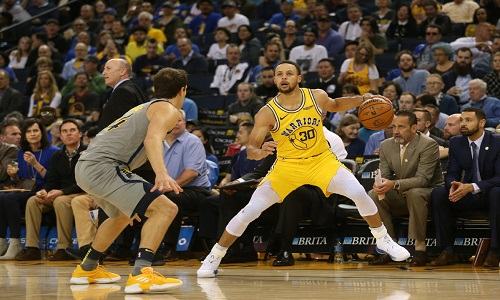
Traveling in basketball Sounds like a basic concept. However, many have not yet. Are you one of them? You should not ignore this article.
Clarify this concept when trying to teach your 8-year-old son. So, what does it mean to travel in basketball? Let’s find out Through the following article.
What is traveling in basketball?
Basketball travel is a very simple concept that any basketball player should know. This is a foul in basketball. Basically, a traveling violation occurs when you move with the ball without dribbling.
However, if you dig deeper into it, you will find that it is more complicated. Here are three common cases where many players often break the rule of travel.
- When you receive the ball while moving.
- When you receive the ball while standing still.
- When you start dribbling.
See More: Who was the first black NBA basketball
1. You get the ball on the move
In this case, if you take three or more steps without dribbling, you will break the travel rules.
To avoid this, you need to release the ball to pass or shoot before taking more than two steps. If you already have one foot on the floor when you catch the ball, you don’t take a second step.
2. You get the ball while still
To find the direction of the pass and protect the ball, you can turn one foot. However, you must ensure that this leg does not move. This is the pivot foot.
When catching the ball while stationary, if your pivot foot moves, lifts off the floor, or trips it.
You can lift the pivot foot to take a shot or pass. However, you must release the ball before your foot hits the ground again.
3. Starting a dribble
When you start dribbling, if you lift your pivot foot before dribbling, you are breaking the travel rules. To avoid this, all you have to do is release the ball before moving the pivot foot.
You can see Video To better understand these three cases.
RELATED: Who has the Most NBA Rings?
The only foot that should be on the floor is the pivot foot. You can think of it as the anchor of a boat! That is, it must be in a certain position. The pivot leg can be the right or left leg.
You can move the other leg in any direction, just make sure the pivot leg doesn’t skid the floor. If you allow the pivot foot to move or leave the ground, you are breaking the trip rule.
If you receive the ball with both feet on the ground, you can choose either foot as the pivot foot. If you receive the ball with both feet off the ground, the foot that hits the ground first will be the pivot foot.
So what if you receive the ball in the air and land with both feet? In this case, you can choose any foot as the pivot foot.
The pivot foot can leave the ground when passing or shooting. However, you need to release the ball before landing.
The pivot foot can also be moved while dribbling. You need to make sure you release the ball while moving the pivot foot.
Some popular examples of traveling violations in basketball
Here are some examples of traveling violations in basketball:
- Move your pivot foot while turning for orientation.
- Land with both feet off the floor before you shoot or pass.
- When moving you receive the ball and take more than three steps without dribbling.
- You fall to the floor without keeping your pivot foot.
- You are rolling on the ground.
- After lifting your pivot foot, you dribble.
Here are some moves you should do right to avoid travel violations
Euro-step is a very useful move for attacking players if defenders get close to them. The move is made by the player taking two steps in two different directions after receiving the ball. By euro-stepping, you can distract the opposing defender. If you choose to take three steps instead of two after receiving the ball, you will follow the travel rule.
The gathering phase is the phase a player takes when collecting the ball. In other words, the collection phase is the step taken by the player when he gains control or collects the ball.
It cannot be denied that the gathering phase allows players to approach the rim with ease. A player can take three, four or even five steps without dribbling.
You need to remember that the collection phase is different from the initial phase that a player takes when collecting the ball. Many people confuse this and violate the travel law.
To better understand this move, you can see Video .
If a basketball player takes the step-back shot correctly, he will be strong. The Step Back Shot is a very simple skill. Many NBA players use it for different purposes such as jumping, shooting and passing.
The main purpose of the step-back shot is to create space to score or attack the basket.
To perform this skill, a player needs to attack a defender with a difficult dribble. This is to distract opposing defenders and push them back to get in your way.
Once you’ve made sure the opponent’s defender is back, you step back as well. Then you can create seven to ten feet of distance from the opposing defender.
The late dribble is a basic skill in basketball. As mentioned above, if you receive the ball in a stationary position, you need to dribble before moving the pivot foot.
So you can take a step in any direction before dribbling. However, you need to make sure you release the ball before moving the pivot foot.
Many players sometimes move their pivot foot before making a dribble. That puts them in a travel violation situation.
The up and down is a very common move in basketball. A lot of smaller players like this move to avoid players defending the rim or shot blockers. This move requires good footwork from the player. Therefore, players need to practice a lot to perform this move.
To pull this off, you need to create a fake shot from a stationary position. Its purpose is to distract defenders and make them jump. After distracting the opponent, you will make the actual shot.
To avoid breaking the travel rule, you need to release the ball before one or both feet touch the floor.
Frequently Asked Questions
1. when i get the ball on the move, how many steps can i take before passing or shooting.
In this case, you can take two steps to a stop, pass, or shoot. If you take three or more steps, you will be breaking the travel law.
2. Can I continuously touch the floor with one or both feet after gaining control of the ball?
The short answer is no.
3. What is the pivot foot in basketball?
When a player is in possession of a live ball, he can move one foot in any direction. Meanwhile, the other leg should be fixed on the floor. It’s his leg.
4. Can I pivot after 2 steps?
After taking two steps you can shoot or pass (these two steps are continuous movements). If you stop and dribble, you should hold the ball with two hands and spin with one foot. You can lift the pivot foot, but you must release the ball before the pivot foot hits the ground.
5. Which leg should be my pivot leg?
Many people will have different opinions on this matter. In our opinion, if you are right-handed, your pivot foot should be the left foot. Conversely, if you are “left-handed,” you should use your right foot as a pivot foot.
Final thoughts
In general, traveling in basketball is a violation. You may find it difficult to use these rules in the beginning. However, over time, they will gradually become natural. You don’t have to worry about them anymore.
Related Posts
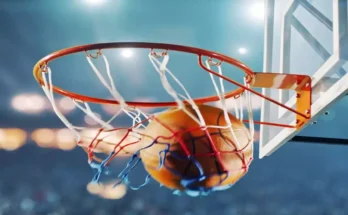
Bounce to Better Health: Unveiling the Remarkable Benefits of Basketball
March 16, 2024 March 16, 2024
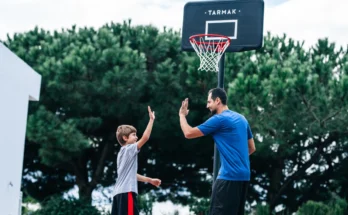
Dribbling Through Time: The Rich History of Basketball
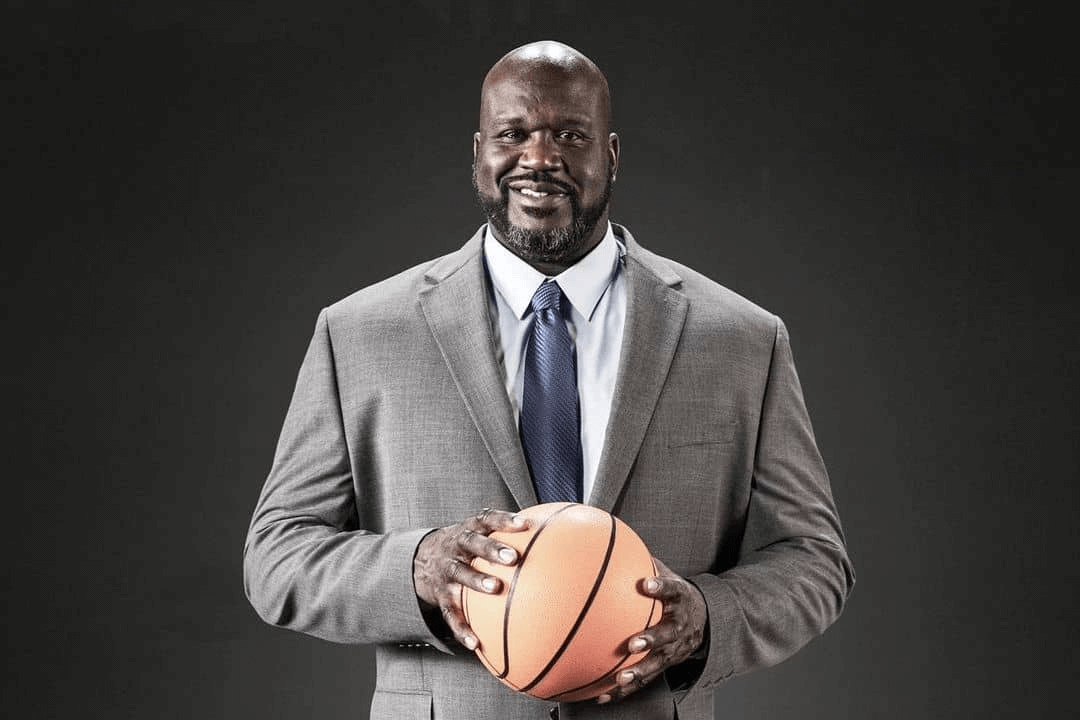
What companies does Shaq own? A lot, apparently
January 23, 2024 January 23, 2024
About Kevin
Leave a reply cancel reply.
Your email address will not be published. Required fields are marked *
Save my name, email, and website in this browser for the next time I comment.

What is a Travel in Basketball? Explained in Detail
Last Updated April 1, 2024 Last Updated October 18, 2023 by Edward Pullen
In the exciting world of basketball, where players dribble, pass, and shoot their way to victory, a rule often leaves spectators and even some players puzzled: the travel violation.

Table of Content
What is Called a Travel in Basketball?
What is an example of travel in the nba, why is a layup not traveling, is 3 steps a travel, can you travel while dribbling, the best basketball shoes for running: unveiling performance and comfort, 2. adidas originals men’s d.o.n. issue #1 basketball shoe, 3. nike men’s basketball shoe, how do nba players travel, how do you not travel in basketball, why are travels not called in the nba.
A travel in basketball refers to a violation where a player takes excessive steps while holding the ball without dribbling it. In essence, it’s a breach of the rules that aim to maintain fairness and uphold the fundamental principles of the game. When a player travels, they gain an unfair advantage by covering more ground than allowed, potentially altering the course of the game.
Imagine a scenario in the NBA: a player receives a pass while on the move. However, instead of immediately dribbling the ball, they take three steps before finally starting to dribble.
In this case, the player has committed a travel violation. The rules stipulate that a player can take only one or two steps after gathering the ball before they must dribble.
Layups, a staple in basketball, may seem like they involve a player taking multiple steps. However, they are not considered travels due to a specific rule that addresses the “gather step.”
In a layup, a player gathers the ball while taking a step and then takes another step before releasing the ball toward the basket. This gather step is allowed, making the subsequent movement permissible and not counted as a travel. But is a jump stop a traveling violation or not? Find out here:
The concept of a “three-step” rule is a common misconception. In reality, players are allowed a limited number of steps after picking up their dribble or receiving a pass. The number of steps varies depending on the specific situation, but typically, a player can take one or two steps before releasing the ball or dribbling. Taking three steps without dribbling constitutes a travel violation.
Traveling while dribbling is a rare occurrence because it involves a controlled and rhythmic movement. However, a player can still commit a travel violation if they interrupt their dribble and then take steps before resuming it. The key is maintaining a continuous dribble while in motion to avoid being penalized for traveling.
Regarding basketball, having the right footwear can make all the difference in your performance. Combining the demands of the game with the need for optimal running support, we’ve curated a selection of the best basketball shoes that excel in both categories. Whether you’re a seasoned player or an enthusiastic amateur, these shoes offer the perfect blend of style, comfort, and functionality.
1. Under Armour Unisex-Adult Lockdown 6 Basketball Shoes
“Unmatched Performance and Style”
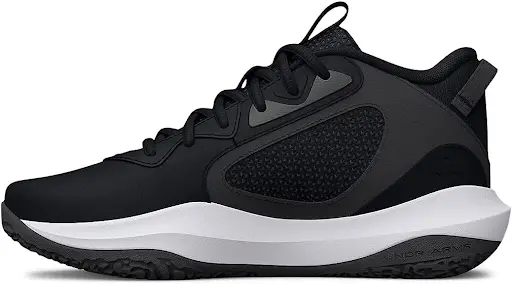
Key Features:
- True to size fit for comfortable wear.
- Available in a variety of stylish color combinations.
- Diverse product assortment designed for different weather conditions.
- Superior build quality with attention to innovation and design.
- Exceptional comfort and support.
- Versatile for all-season wear.
- Technologically advanced materials for enhanced performance.
- Wide range of sizes available for both men and women.
- Some users may find the pricing on the higher side.
- Limited availability of certain color options.
The Under Armour Unisex-Adult Lockdown 6 Basketball Shoe is a testament to the brand’s commitment to innovation and design. With a true-to-size fit and a variety of stylish color combinations, these shoes offer exceptional comfort and cater to different weather conditions.
Under Armour’s dedication to technology ensures that players experience top-notch performance regardless of the playing environment. While the price point may concern some, these shoes’ features and benefits make them an excellent choice for serious basketball players.
“Elevate Your Game with Iconic Style”

- Available in a range of colors for a personalized look.
- True to size fit for consistent comfort.
- Unique design and style that captures attention.
- Designed with high-quality materials for durability.
- Exceptional fit and comfort for prolonged wear.
- Iconic design that appeals to sneaker enthusiasts.
- Wide variety of color options to suit individual preferences.
- High-quality build ensures longevity.
- Some users may prefer more cushioning for impact protection.
- Pricing may be a bit higher compared to other models.
The adidas Originals Men’s D.o.n. Issue #1 Basketball Shoe is a testament to adidas’ legacy of creating iconic and high-performance footwear. With its attention-grabbing design and range of color options, these shoes are not only comfortable but also elevate your style on and off the court. While the cushioning could be improved for impact protection, the overall build quality and aesthetic appeal make these shoes a strong contender for anyone seeking performance and style.
“Unleash Your Potential with Unmatched Cushioning”

- Wide range of sizes and color combinations for customization.
- Designed with Nike Renew technology for cushioning and resilience.
- Lightweight, layered mesh upper for enhanced support.
- Durable rubber sole with unique traction pattern.
- Outstanding cushioning and support for optimal performance.
- Lightweight and breathable upper ensures comfort during play.
- Innovative traction pattern offers excellent grip on the court.
- Durable build designed for outdoor courts.
- Some users may find the shoe sizing slightly inconsistent.
- Pricing varies based on size and color options.
The Nike Men’s Basketball Shoe showcases Nike’s commitment to pushing the boundaries of innovation. With the inclusion of Renew technology and a layered mesh upper, these shoes provide exceptional cushioning and support. The unique traction pattern on the sole enhances grip, while the durability of the build caters to outdoor play. While sizing consistency could be improved, the superior comfort and performance features make these shoes an excellent choice for players looking to optimize their game.
Just as selecting the right basketball shoes is crucial for enhancing your performance on the court, understanding the nuances of traveling in basketball is equally vital to maintaining fair play and game integrity. Much like the diverse features and advantages the reviewed shoe models offer, the rules surrounding traveling cater to different player preferences.
Whether you prioritize seamless movement, tactical execution, or dynamic plays, a clear grasp of travel regulations ensures that you navigate the court with finesse. Embrace the parallels between choosing the ideal footwear and adhering to travel rules, as both contribute to an unparalleled experience in basketball.
NBA players are highly skilled and well-versed in the game’s intricacies, including the rules regarding traveling. While accidental travels can still happen, players are trained to maximize their dribbling technique and footwork to minimize the risk of committing a travel violation. Precise footwork, quick reactions, and an understanding of the rules are crucial in avoiding travels during fast-paced NBA games.
To avoid committing a travel violation in basketball, players must adhere to a few key principles:
- Maintain Dribble : If a player has the ball, they should keep the ball bouncing on the court using dribbling techniques to establish legal movement.
- Limited Steps : After stopping their dribble or receiving a pass, players are allowed only a certain number of steps before they must either release the ball or resume dribbling.
- Gather Step : When driving toward the basket for a layup, players can take a step before releasing the ball, ensuring their movement is legal and not considered a travel.
Sometimes, viewers may observe instances that seem like travels in the NBA but are not called by the referees. This can occur due to various factors, including the fast pace of the game, the difficulty of judging split-second movements, and the focus on allowing players some leeway to execute dynamic plays. While some travels may go unnoticed, referees strive to make the fairest calls possible, given the challenges of officiating such high-speed contests.
Understanding the concept of traveling in basketball is essential for players, fans, and enthusiasts alike. This rule ensures fair play and maintains the integrity of the game. By comprehending the nuances of traveling, players can refine their skills, and fans can enjoy the sport with greater insight.
- Latest Posts

- How To Make Basketball Shoes More Grippy? - October 12, 2023
- How to Become a Basketball Referee? - October 11, 2023
- Unlocking Basketball Success: The Art of Effective Coaching Strategies - October 10, 2023


What is a Travel Violation in Basketball?
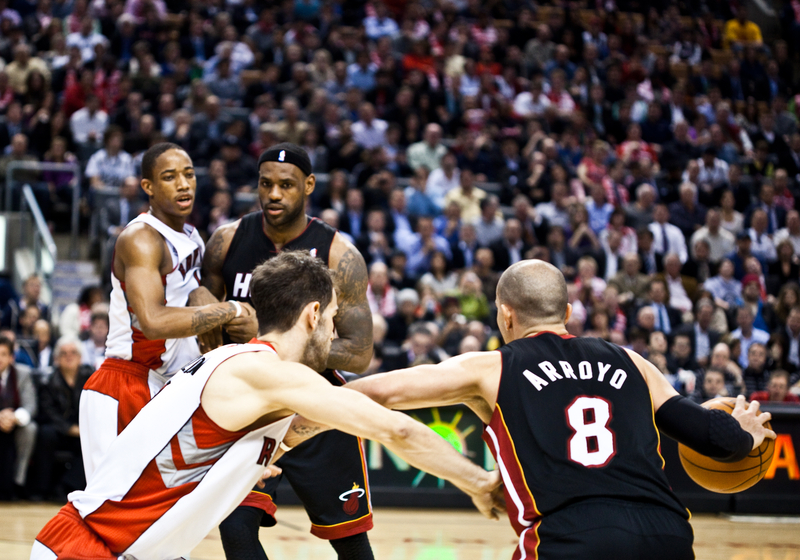
A traveling violation is one of the first rules many people learn when they start playing basketball. This penalty occurs when a player holds the ball and illegally moves their feet. This penalty encourages control of the ball through dribbling and is essential to maintaining effective movement in basketball.
So, how many steps occur that result in a basketball travel violation? Are 3 steps a travel in basketball? What is the difference between a travel and a carry? How do NBA refs decide if a play is a travel or not? What is the penalty for creating a travel in a basketball game? Are there any criticism on travel calls? Is the NBA doing anything about the lack of travel calls in games?
Here is the complete guide to what a travel is in basketball.
Table of Contents
How Many Steps is a Travel Violation?

Generally speaking, a travel foul occurs when a player takes more than two steps without dribbling the ball. The player can move independently as long as they continue to dribble. If the player comes to a complete stop, either the left or right foot may become the pivot foot. Typically, the first foot that comes off the ground can move while the other stays planted.
However, during a basketball game, players might take three steps on offensive plays without dribbling. For example, a player might take three steps to dunk from a pass from their teammate due to their forward momentum. While this is technically a travel violation, it comes down to the referee’s discretion on what is happening in the game.
A referee wants to keep the flow of the game moving, so they sometimes let this travel violation slide in the example above. However, they do have the right to call this a travel violation if it blatantly takes advantage of the three-step rule.
Is 3 Steps a Travel in Basketball?

In the NBA, WNBA, college basketball, and so on, taking three steps without dribbling will result in a travel violation. However, one thing to remember is that a player can use their pivot foot and move around without resulting in a travel. For example, a basketball player can dribble with the ball, stop, pivot a few times, and then pass or shoot the ball. That pivot movement with their foot won’t result in a travel even though they are taking additional steps.
What is the Difference Between a Travel and a Carry?

A carry can result in a travel call in a basketball game. For example, if a player is dribbling with the ball up the court, they have their hand at the top of the ball. However, if they put their dribbling hand under the ball while moving with it, it will result in a travel violation. If a player puts their hand under the ball, they must either pass or shoot it since dribbling again will result in a travel violation.
How Do NBA Referees Decide What’s a Travel?

Almost all basketball leagues have traveling rules from NFHS (high school basketball’s governing body) to the NCAA, NBA, and FIBA. Many of these regulations are similar and set up rules for establishing a pivot foot, allowing players to set position by moving one foot while keeping the other stationary. These rules place an illegal movement of the pivot foot, which might trigger a travel violation.
If a player receives a pass while moving, they may take one gather step before taking the two steps used to evaluate a travel call. A gather’s definition is any time a player takes control of a loose ball (which can be in the process of a pass, a bounce, or rebound, for example.) While gathering the ball, the player can touch the ball with both hands.
After gathering the ball, the player can take a first and second step before attempting a field goal or relinquishing possession of the ball. The NBA rule book also dictates who can touch the ball after a field goal attempt. For example, a player who shoots the ball cannot be the first to touch the ball if it fails to touch the hoop, backboard, or another player (this is also called an airball.) If they do, they may receive a traveling call.
What is the Penalty for a Traveling Infraction in Basketball

The NFHS and NCAA have different penalties for traveling than the NBA. In lower leagues, traveling results in a dead-ball foul. The opposing basketball team then inbounds the ball from out of bounds closest to where the traveling foul occurred.
When an offensive player commits a traveling foul in the NBA, the opposing team gets the ball. However, there are limits to where the team can receive the ball. NBA rules specify that a team can receive the ball no closer to the baseline than the free-throw line.
Critics of Traveling in the NBA

Fans routinely look at James Harden as a critical example of how lenient NBA referees are regarding traveling calls. Harden consistently comes to a jump stop just inside the three-point line. Basketball rules dictate that at this time, Harden should pass or take a shot.
Instead, he takes two steps back to post a three-point shot. Harden has become so well known for this routine that it’s become known as the “Harden step back.”
Outside of James Harden, many critics of the NBA believe that traveling violations are under-called by officials across the board. Under-calling this rule is generally made to help maintain the flow of the game. However, the lack of travel calls in the NBA often puts professional players at a disadvantage when they play overseas or in international competitions.
What is the NBA Doing About the Travel Criticism?

Because of this criticism, the NBA has made several rule changes to its traveling rules to increase how often it’s called. These changes are an attempt to make the regulations more apparent and improve the accuracy of calls. The league made an update to the rule before the 2019-2020 season. However, that clarification maintained that deciding a travel call is still up to referee discretion , which can be frustrating to some fans who think the foul is under-called.
Conclusion: What is a Travel Violation in Basketball?
In summary, a travel call in basketball occurs when a player holds the ball and illegally moves their feet. However, there is some debate as to how often this call actually occurs during an NBA game. Regardless, fans and players should still understand the concept of a travel call during a game to understand when it happens, and more importantly, when it is and is not issued against a player.
Similar Posts
What is a Technical Foul in Basketball?
Basketball Assist
What is Goaltending in Basketball?
How Much Do NBA Refs Make?
What is a Triple-Double in Basketball?
Basketball Dunk
What is a Free Throw in Basketball?
How Long are NBA Games?
Why Do Basketball Players Wear Tights and Sleeves?
What Does a Bonus Mean in Basketball?
Basketball Shot Clock Violation
Why is Toronto in the NBA?
What is a Field Goal in Basketball?

Greg Kristan, owner of The Stadium Reviews, LLC and TM Blast, LLC , brings his extensive experience visiting over half of the MLB ballparks, along with numerous MLS, NHL, NBA, and NFL venues, to provide in-depth coverage on the bag policy, food options, and parking. He has also been interviewed about his experiences on several sports podcasts.
Leave a Reply
Your email address will not be published. Required fields are marked *

- April 1, 2024 | Breaking News . . .
- April 1, 2024 | Another story to tell . . .
- April 1, 2024 | Bringing the glory days back to Westfield
- April 1, 2024 | During the eclipse, only call for real emergencies
- April 1, 2024 | It sure is nice what they do, but that will never be me
- March 31, 2024 | TIGERS GO ALL THE WAY!
The differences between school & travel basketball

Posted By: The Reporter December 24, 2022
By KENZIE GARNER Sheridan High School Student

Growing up, I would always think about how high school basketball was going to be the best thing that would ever happen to me. That was until I started to play travel basketball (AAU).
Travel basketball is a different type of basketball: it isn’t like your normal high school basketball or your rec leagues, and it is very intense and competitive. You could have the country’s best players on a team, and they could still lose by 20; you never know the outcome, you just play until the buzzer sounds.
On the other hand, with high school basketball you typically can guess the outcomes. If you have the best team in the state against a couple of good people, you can tell who is going to win based on experience and skill. This is why I believe that school and travel sports are completely different from one another.
I have played both high school and travel basketball in my career, and personally, I enjoy travel basketball way more than school ball. However, there are many good things that school basketball has to offer. During school basketball, you have cheer blocks, you can play with your friends, there are more people cheering you on, and you can get rewards for your stats or your team making it far in the state tournament. Unlike school basketball, in AAU you don’t have these things. Yes, you have people cheering you on, but it’s not like your hometown rooting for you to win your home games. You also don’t get awards for playing AAU unless you win a tournament.
Another difference between school and AAU basketball is the level of competition. In school basketball you may not play against the level of competition that you play against in an AAU game. In AAU, depending on the bracket or age group that you play in, you can play against some of the best players in the country of that age group. During school ball, you may not always play against the best competition there is. Most people who play school basketball don’t do AAU because they want to focus on another sport, or they don’t want to play basketball at a higher level.
The ways that you prepare yourself for school basketball and AAU basketball also vary. During school ball, you can prepare yourself a lot more efficiently than you can during an AAU game. For example, during school basketball we watch film, break down different players’ strengths and weaknesses, as well as practicing against what they would most likely do while playing against us.
This is not the same for AAU; you can’t really prepare yourself for what the team will do, you just have to go out and play and respond to what they do. That is what I like most about AAU: the fact that you can just go out and play and not have to worry about what certain players are good at. For me, I find it a lot easier to go out and play than watch film on the other team and break it down because when I play, I don’t think about what I am going to do, I just do it in that moment.
Although school basketball and AAU have many similarities, the differences are the easiest things to pick out when you go to an AAU tournament.
One of the biggest differences that you can see is the way you play the game. During an AAU game, the refs let you play. What I mean by that is they don’t necessarily call fouls, they let you hack other people and only call it every once in a while. Sometimes this can cause the game to get very out of control, but most of the time the referees know when to start calling fouls and tell people to settle down. This may also be one of my favorite parts because unlike school basketball, instead of getting five fouls you get six. This can make a big difference because it allows you to play more and not get in foul trouble if you have three or four fouls in the third quarter.
Overall, I think that both school basketball and AAU are useful to anyone who wants to play basketball at any level. However, if you plan on playing basketball at a higher level, it is smarter and more beneficial to play AAU instead of just playing school basketball. Playing AAU gives you the opportunity to play in front of college coaches who can recruit you to play for them.

basketballsite
What is TRAVEL Basketball? (everything you need to know)
Travel basketball is a competitive basketball program for youth of all ages who want to compete at a higher level. Travel teams consist of talented players who typically “travel” to other cities and states to compete in weekend tournaments . Playing travel basketball allows youth basketball players and teams an opportunity to develop their skills and play against more experienced teams.
Travel basketball is commonly referred to as “club” or AAU basketball. If you are asking the question, “what is travel basketball” then you or your basketball player are likely considering joining a team and need more helpful information. If this is you, please keep reading for a deeper dive into travel basketball.
In this article, I am going to discuss the types of travel basketball teams, benefits of travel basketball and types of tournaments. This information will help you better understand what travel basketball is all about!
Types of Travel Basketball Teams:
Benefits of travel basketball:, recreational leagues-, school based basketball, local and regional tournaments:, showcase tournaments:, invitational tournaments:, national championship tournaments:, international tournaments:, college exposure tournaments:, amateur athletic union (aau):, united states specialty sports association (usssa):, national travel basketball association (ntba):, youth basketball of america (yboa):, independent tournament organizers:, conclusion:.
Anybody can start a travel basketball team. Well, almost anybody! There are five different types of travel basketball teams, in my opinion. They are private teams, recreational offshoots, community/city recreational offshoots, competitive teams and sponsored teams. If you are interested in starting a travel basketball team, please check out my article on starting your very own travel team.
- Single teams- These teams are typically started by a coach who has a group of players interested in competing at a higher level. The players are likely a group of kids that enjoy playing together and always try to get on the same recreation team but because of drafting rules have a difficult time. They will likely only have one team.
- Private recreation teams- These are teams created by individual recreational league directors. They establish these teams to give their more elite players an opportunity to compete at a higher level. Elite teams also help market their recreation leagues. These types of travel basketball teams will have multiple teams likely representing each grade. These types of travel teams may have different levels of teams in the same grade. For example, they may have an A team and a B team (Division I and II). The coaches are typically volunteers.
- Community/city recreation teams- These are teams created by the city as offshoots to their recreational league. This is similar to the private teams but operated by the community/city leaders of the individual basketball program. These types of travel basketball teams will have multiple teams likely representing each grade. These travel teams may also have different levels of teams in the same grade. The coaches on these teams are likely volunteers. Some of which are trying to gain experience for coaching positions.
- Competitive teams- These teams are typically created for the purpose of competing at all of the major basketball tournaments and are seeking the best competition. They are typically private but can also be local community teams as well. The coaches on these teams can be paid or volunteers. These teams are recruiting talented basketball players with a strong passion for the game.
- Sponsored teams- These are teams sponsored by well known sports companies such as Adidas and Nike. These teams typically recruit the best basketball players. Players can travel significant distances to be on these teams.The coaches are typically paid but can also be volunteers with significant experience. These teams travel to exposure tournaments and have multiple teams in various grades.
- Higher Level of Competition : Playing on a travel basketball team gives players the opportunity to compete at a higher level against top-tier opponents. The games are more challenging than recreational leagues and it’s exposure can significantly elevate one’s basketball skills and knowledge.
- Skill Development: The higher level of competition and frequent practice helps players build their skills and basketball IQ, fosters teamwork and overall performance.
- Exposure and College Opportunities: Travel basketball tournaments attract college recruiters, scouts, and coaches who are seeking talented players for their programs. Participating in travel basketball can increase players’ visibility and provide opportunities for scholarships and collegiate basketball careers.
- Teamwork and Camaraderie : Being part of a travel basketball team builds a sense of camaraderie and teamwork. Players develop strong bonds as they train, travel, and compete together, building lifelong friendships and valuable life skills.
- Traveling and Expenses: As the name suggests, travel basketball involves traveling to various tournament locations, often requiring overnight stays. Players and their families are responsible for covering travel expenses, including transportation, accommodations, and meals. To give you a better idea of how much travel ball costs please check out this article on costs associated with travel basketball.
How Is Travel Basketball Different?:
“Rec” leagues are designed for fun and a less competitive basketball experience. These are typically the first level of basketball for most players. Travel basketball, on the other hand, caters to athletes who are committed to more intense competition and skill development. Another difference is that recreation league games will be played in local gyms in your city while travel games will more likely be played in another city or state and the competition will be at a higher level.
School-based basketball includes players that attend that specific school. The competition is essentially fixed for the most part unless the coach organizes scrimmages with other teams from outside of the area. Travel basketball can include players from various different schools and different cities. There are not typically any rules governing where a student lives.
Types of Tournaments:
Travel basketball tournaments are the backbone of the competitive landscape of travel basketball. This is where teams go to showcase their talent. These tournaments are typically an entire weekend and can be longer. There can be anywhere from four or more teams competing in any given tournament.
Tournaments start out in pool play and then teams advance to the championship games. Teams will typically be guaranteed three games but can play more depending on their record. Let’s explore some of the different types of tournaments played in travel basketball.
Local and regional tournaments are the most common types of tournaments. These are the most common types of tournaments and attract teams from nearby cities or states. They offer teams the opportunity to compete within a geographic area and are often organized by local basketball associations, AAU programs, or independent organizers.
Showcase tournaments are designed to provide high-level competition and exposure for teams and individual players. These events often feature teams from different regions, drawing college recruiters, scouts, and coaches who are seeking talented players for their programs. Showcase tournaments are held in popular basketball destinations and showcase venues, attracting a wide range of talent and providing a platform for players to display their skills on a larger stage.
Invitational tournaments are prestigious events that invite top-tier teams to compete. These tournaments typically handpick teams based on their reputation, performance, or ranking. Invitational tournaments may have strict entry criteria and limited slots, ensuring that only the best teams from different regions participate. The level of competition in these tournaments is exceptionally high, with teams battling it out for recognition and championships.
National championship tournaments are the pinnacle of travel basketball competition. These tournaments bring together the top-ranked teams from different regions to compete for the national title. They are organized by various governing bodies and associations, such as the AAU (Amateur Athletic Union) or USSSA (United States Specialty Sports Association). National championship tournaments attract widespread attention and media coverage, with college recruiters closely monitoring the performances of players and teams.
In addition to domestic competitions, travel basketball teams may also have the opportunity to participate in international tournaments. These tournaments bring teams from different countries together, promoting cultural exchange and showcasing basketball talent on a global scale. International tournaments offer a unique experience, allowing players to compete against foreign opponents, learn different playing styles, and broaden their perspectives on the sport.
College exposure tournaments are specifically designed to provide players with exposure to college coaches, recruiters, and scouts. These tournaments are strategically organized to attract college representatives, and teams and players participate with the goal of capturing the attention of college programs. College exposure tournaments often include showcase games, skills competitions, and networking opportunities, allowing players to make a lasting impression on college decision-makers.
Sanctioned Travel Basketball Organizations:
It’s important to note that the specific tournaments available in travel basketball can vary based on the region, governing bodies, and local basketball associations. The tournament landscape is dynamic, with new events emerging and existing ones evolving over time. Coaches, teams, and players stay updated on tournament schedules, rankings, and eligibility criteria to ensure their participation in the most suitable competitions for their goals and aspirations in travel basketball.
Travel basketball tournaments are organized by various organizations that specialize in promoting and facilitating competitive basketball events. These organizations play a crucial role in creating opportunities for teams and players to showcase their skills, gain exposure, and compete at high levels. Let’s explore some of the prominent organizations that host travel basketball tournaments.
The AAU is one of the most well-known and established organizations in youth sports, including basketball. It offers a comprehensive program for travel basketball teams and organizes a wide range of tournaments at the local, regional, and national levels. The AAU hosts both invitational tournaments and national championships, providing opportunities for teams to compete against top-tier competition and gain exposure to college recruiters.
The USSSA is a prominent organization that organizes travel basketball tournaments for various age groups and skill levels. They offer a comprehensive calendar of events, including local and regional tournaments, state championships, and national tournaments. The USSSA provides a platform for teams to compete at a high level and potentially earn bids to national championship tournaments.
The NTBA focuses on organizing competitive travel basketball tournaments for boys and girls across the United States. They host events throughout the year, including regional championships and national tournaments. The NTBA aims to provide a well-structured and fair environment for teams to showcase their talents and compete against top competition.
YBOA is a national organization that promotes youth basketball and hosts travel basketball tournaments across the country. They offer tournaments for different age groups and divisions, including regional and national championships. YBOA emphasizes fair play, sportsmanship, and player development, creating opportunities for teams to compete in a positive and competitive environment.
HoopSeen is an organization that focuses on organizing basketball events and showcases, including travel basketball tournaments. They provide platforms for teams and players to gain exposure, compete against top competition, and attract the attention of college recruiters. HoopSeen hosts tournaments at various locations and offers a comprehensive scouting and ranking system for participating teams.
In addition to established organizations, independent tournament organizers play a significant role in hosting travel basketball tournaments. These organizers may focus on specific regions, age groups, or competitive levels. They provide opportunities for teams to compete locally or travel to different destinations for high-quality tournaments. Independent tournament organizers often collaborate with local basketball associations, schools, or community centers to facilitate their events.
Travel basketball is a program designed to foster a more competitive experience for youth ballers by offering sanctioned tournaments against teams from other cities and states. This program is helpful for players because it allows them exposure to basketball situations they may have not experienced before increasing their basketball IQ. In this article, we discussed the different types of travel ball teams, benefits of travel ball, and types of tournaments. Hopefully, you have a little more information to answer the question, what is travel basketball?
- Age Specific
- Travel Basketball

Is Travel Basketball the Same as AAU? Unveiling Key Differences to Guide Your Choice
So you’ve got your sneakers laced up and you’re ready to dive into the world of competitive youth basketball. But wait, you’re hearing about travel basketball and AAU and wondering, aren’t they just two sides of the same coin? Well, it’s not quite that simple.
Travel basketball and AAU are often used interchangeably, but they’ve got some distinct differences that set them apart. Whether you’re a player looking to up your game or a parent trying to navigate the best path for your budding superstar, knowing these differences is key.
Let’s break it down and get to the core of what sets travel basketball apart from AAU. You’ll find that each has its own vibe, rules, and opportunities that could make all the difference in your basketball journey.
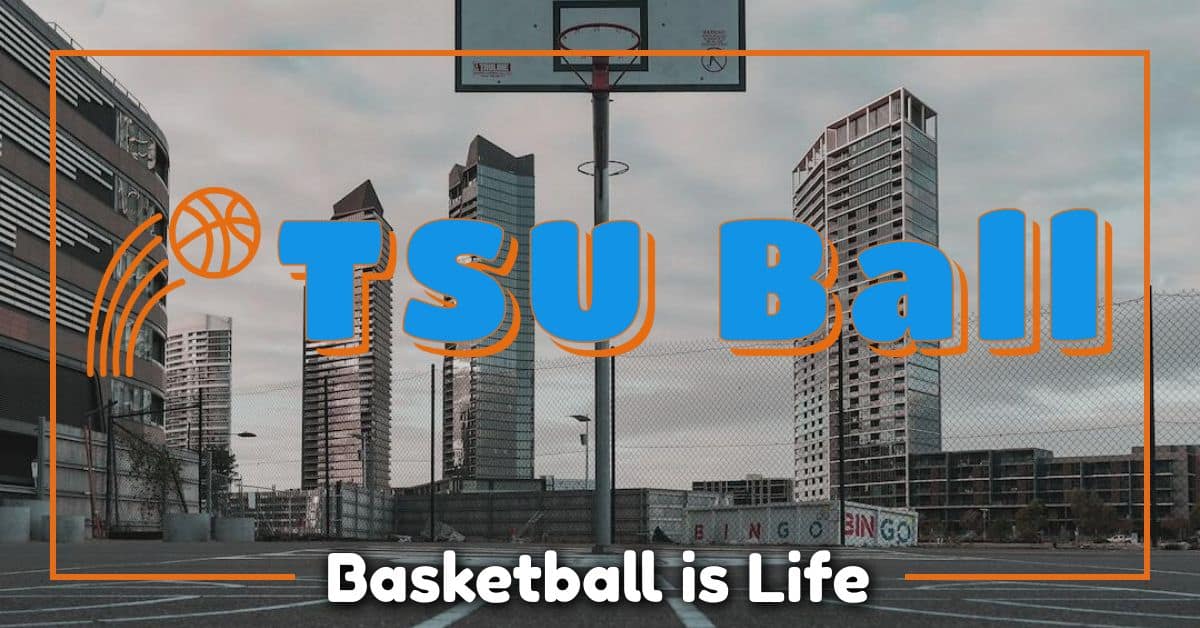
What is Travel Basketball?
Imagine you’re suiting up for a weekend series of tough competitors, each game taking you to a new gym, a fresh challenge. That’s the heart of travel basketball. It’s competitive , focused on enhancing skills, and offers the chance to face diverse teams. Geared towards youth players, travel basketball teams generally play within their region or state, though sometimes they might go further afield for tournaments.
As your team hops from town to town, the commitment intensifies. You’re looking at practices during the week and games on weekends. It’s demanding —but it’s also rewarding. You’ll see players develop their game at a rapid pace because travel basketball introduces them to various styles of play and strategies. It’s about more than winning; it’s about growth.
In travel basketball, the selection process is a bit more localized . You’ll often try out for a team based in your community or nearby. Coaches like me are watching not just for skill but for potential. We’re seeking players willing to learn and adapt. And despite its local flair, make no mistake: the competition is fierce. Teams are often sponsored, which means they have the resources to access quality coaching and training.
- Skill Development : Sharpening abilities through competition.
- Team Bonding : Long hours together forge strong team dynamics.
- Exposure : Local visibility can lead to regional recognition.
Remember, travel basketball isn’t just about the athletes. It’s about families who pack into cars, clutching coffee and GPS directions to the next game. It’s a community effort , where local businesses might sponsor and where hometown pride is on the line.
What is AAU?
You’ve got the drive and passion for the game, much like many players who join AAU basketball leagues . The Amateur Athletic Union, known as AAU, boasts a rich history dating back to its inception in 1888. Unlike travel basketball, AAU is a national program that focuses on competitive amateur sports, which includes basketball as one of its prime sports.
Let’s break it down. AAU basketball offers a chance for players like you to showcase their talents on a larger stage . It’s about much more than local or regional competitions; AAU tournaments can catapult players onto national platforms . Here, college scouts and coaches are often in attendance, their eyes peeled for the next wave of talent.
Beyond individual exposure, AAU provides a structured environment for athletes to develop. The league operates year-round, providing consistent opportunities to play. Within the AAU framework, you’ll find a mix of clubs: some elite and others that are more accessible to players just starting to flex their competitive muscles.
In AAU, the age groups are specifically sorted to ensure fair play and maximum growth opportunity. The range extends from the under 9 category (U9) all the way to the U19 bracket. This ensures that you’re always playing with and against peers, pushing you to elevate your game.
AAU basketball can be a stepping stone to collegiate basketball or even a professional career. Its emphasis on elite competition means that players often face off against the best in their age group. This not only tests your abilities but also pushes you to refine your skills under pressure, a trait that’s highly regarded at any level of the sport.
Remember, while the commitment to AAU can be intense, with frequent practices and tournament travel, it’s also a place to forge lasting friendships and learn valuable life lessons. It’s where your dedication meets opportunity — a true test and a chance to shine on the court.
Understanding the Differences
As you delve deeper into the world of youth basketball, it’s crucial to recognize that travel basketball and AAU are distinct entities with different goals and structures. You might find yourself wondering about the divergent paths a young athlete might take and how they would impact their development. Let’s break it down.
With travel basketball, think local. These teams often represent a specific geographic area, and their games are primarily against nearby competition. It’s about fostering a sense of community and team spirit, as well as honing skills against familiar rivals. The routine involves regular practices and games, typically within driving distance, which makes it a bit more manageable for family schedules. On the flip side, AAU basketball is about branching out. Players are part of national tournaments, facing off against the top talent from across the country. It’s a bigger commitment, but the rewards match the effort – exposure to college scouts and a tougher level of competition.
The intensity of AAU programs can’t be understated. They’re rigorous and demanding, designed to prepare players for high-level basketball. You’ll find that AAU teams practice at a pace that mirrors college programs – they have to, to stay competitive on such a grand stage. Your athletes will learn resilience, adaptability, and the intricacies of basketball at a faster rate.
Age groups in AAU basketball are carefully crafted:
This exacting categorization ensures that every player is challenged yet not overwhelmed, allowing them to grow to their full potential. Although AAU may offer a glimpse at the big leagues, it’s not the only path to success. Many players thrive in the travel basketball scene, where they develop their skills and build a strong team rapport that lasts for seasons.
The choice between travel basketball and AAU shouldn’t be taken lightly. It’s about finding the right fit for an athlete’s current skills, goals, and commitment level. Remember, the road to basketball excellence is not a sprint; it’s a marathon, filled with opportunities for growth, camaraderie, and the pure joy of the game.
Organization and Structure
Now that you’ve got an idea of the different opportunities travel and AAU basketball offer, let’s dive into the nitty-gritty of each program’s organization and structure.
Travel basketball teams are often an offshoot of school teams or local recreational leagues. They’re structured to provide a more competitive edge beyond what you’d typically find in your school gyms. Teams are usually formed within town or city limits, which means your players are often competing with friends or classmates. The process fosters camaraderie and often strengthens community ties.
In contrast, AAU clubs can be a mixed bag when it comes to structure. With an increased focus on competition, these clubs are known for attracting a wide range of talent. Some are modest organizations with a couple of teams, while others are large entities running numerous squads across various age divisions. Here’s the kicker: Not all AAU clubs are created equal . Some receive funding from shoe companies or have sponsorships that afford them more elaborate resources and opportunities.
When it comes to player development, both types provide a chance for athletes to improve their skills, but the pathway they offer is distinct. Travel basketball leans towards a traditional team-first approach. Your players will likely get a sense of continuity as they practice and play with the same group throughout the season.
With AAU, however, diversity is the name of the game . Players might face off with teammates from different regions or states, fostering an environment that’s ripe for individual growth. This means your players can pick up styles of play and coaching philosophies that they otherwise might not encounter.
As you keep tabs on these differences, remember that the level of formality and competitiveness also varies from one organization to another. Whether it’s travel or AAU, each program offers its unique brand of basketball. The trick is to understand the expectations, level of commitment, and the types of opportunities your player is looking for.
Understanding the organizational backbone of these leagues is fundamental to nailing down the perfect fit for your players. Every decision made at this junction can have a profound impact on their basketball journey.
Competition Level and Skill Development
When you think about travel basketball and AAU, it’s key to understand the nuances of competition levels you’ll encounter. Travel basketball, typically organized through schools or local programs, maintains a competitive edge but it’s often tailored more toward developmental play. Here, every player usually gets a chance to hit the court, honing their skills in a real-game scenario.
AAU basketball, however, cranks up the intensity. You’re likely to face off against some of the best youth players in the country , which means every game is a chance to measure up and improve. The players you’ll compete against often have ambitions of playing at a high collegiate level or even professionally. This tough competition can be a forge for skill development, pushing you to stretch your limits.
In terms of skill development, both travel basketball and AAU provide ample opportunities, but the approach differs. With travel basketball, the emphasis often lies in team synergy and fundamentals. It’s about building a solid foundation. Think of it like sharpening every tool in your kit—working on your passes, your dribbling, and your team’s set plays.
In contrast, AAU spotlights individual prowess. If you’re aiming to catch the eye of a scout, this is where you shine. You’ll need standout moments that showcase your unique talents. This isn’t just about scoring but also exhibiting high basketball IQ, like knowing when to make that no-look pass or how to position yourself for a rebound among taller and stronger competitors.
Remember, no matter which path you choose, there’s value in both types of competition. They offer different environments that cater to varying aspects of basketball. As a player, you get the chance to develop not only your skills but also learn to adapt to different styles of play. And that adaptability? That’s a trait that sticks with you, on and off the court.
Cost and Commitment
Joining a travel basketball team or an AAU club doesn’t just require time and dedication – you’ve also got to consider the fiscal responsibilities. Let’s break it down.
Travel basketball costs might seem more manageable at first glance. You typically pay for the team fee, uniforms, and sometimes, a small contribution to the coach’s stipend. Local travel expenses can add up but usually don’t stretch your wallet like cross-country tournaments would. Remember though, costs can bring surprises, especially with added tournaments or additional gear.
On the flip side, AAU basketball tends to come with a heftier price tag. You’re often looking at higher team fees because AAU tournaments usually demand entry fees, and these events are frequently held in destinations that aren’t within driving distance. That means hotel stays, dining out, and possibly airfare – a significant commitment for the whole family. Here’s a quick look at the typical expenses you might encounter:
Let’s talk time. Travel basketball programs usually have a set season which coincides with the school year, making it a bit easier to balance basketball with academic and family commitments. You’re generally looking at two to three practices a week with games on weekends.
AAU basketball, however, is a whole different ballgame. You’ll find these teams practicing multiple times a week with regular weekend travel. Some elite teams may even request daily practices. Your weekends? Mostly booked with games or tournaments. It’s not just a season; it’s almost a year-round endeavor. This level of dedication can sharpen your skills but also means juggling basketball with other aspects of your life.
Keep this in mind – it’s about balancing what you love with what you can realistically commit. Both travel and AAU basketball can provide valuable experiences, but you’ve got to decide what works best for your circumstances and goals.
Opportunities and Exposure
When you’re weighing the pros and cons of travel basketball versus AAU, one significant factor to consider is the level of exposure and opportunities available for athletes looking to make it to the next level. Travel basketball can offer a great platform for players to showcase their skills, especially in front of local high school coaches who might be scouting for talent to add to their rosters. It’s a great stepping stone if you’re aiming to catch the eye of someone who could significantly impact your basketball journey.
In contrast, AAU basketball is often viewed as the premier circuit for exposure on a national scale, attracting not just high school coaches but college scouts and recruiters as well. The AAU circuit is known for its highly competitive tournaments that feature the cream of the crop when it comes to youth basketball talent. The stakes are higher, and so are the rewards, as performing well in these tournaments can put you on the radar of top-tier basketball programs across the country.
The level of opportunities AAU basketball provides can be unrivaled due to the presence of elite competition and the frequency of events. Players often find themselves playing against the best of the best, which not only sharpens their skills but also gives them a chance to measure up against their peers. Furthermore, many AAU events are sponsored or run by major sportswear companies, increasing the chances for players to get noticed and even earn sponsorships.
Remember, the path one chooses may significantly affect the trajectory of their basketball career. If your goal is to play basketball at a higher level, whether it’s collegiately or professionally, visibility to the right audience can be just as important as your skill development. As you continue your journey, weigh these factors carefully to make the most informed decision for your future in the sport.
Making the Right Choice
When you’re weighing the options between travel basketball and AAU, your decision should sync with your long-term goals. Do you dream of playing at a state level with your eyes set on a high school varsity spot, or are you shooting for the stars, hoping to catch the attention of national college programs?
Let’s break it down:
- Travel basketball often means sticking closer to home, fostering solid local relationships, and potentially gaining a strong reputation in your immediate area. It’s perfect if you’re looking to impress nearby high school coaches who’ll be crucial in your next steps.
- AAU basketball typically involves more travel and a broader competition spectrum, meaning you’ll face off against a diverse lineup of talent. This is the route to take if you’re seeking to test your skills on a larger stage and need to get comfortable with the pressures of national competition.
Remember, both platforms can give rise to scholarships, but they do so in different arenas. Travel basketball might lead to a scholarship at a local or regional college, while AAU could open doors to larger, Division I schools, given the right exposure and performance.
Think about your current skill level and readiness to compete. If you’re still developing your game, local travel teams can offer a supportive environment for growth. In contrast, AAU demands high performance against top-tier athletes—it’s fast-paced and intense.
Assess your schedule and availability as well. Since AAU basketball requires significant travel and time commitments, you need to ensure it aligns with your academic responsibilities and personal life. Balance is key; you shouldn’t compromise your education for the court or vice versa.
Finally, consider the financial aspect. AAU basketball can be quite costly due to tournament fees, travel expenses, and gear. Make sure it fits your budget or look into potential financial aid or sponsorships that AAU programs sometimes offer.
Choosing between travel and AAU basketball isn’t a decision to take lightly. Reflect on your aspirations, weigh the pros and cons, and deliberate over how each path aligns with your vision for the future. Whichever you choose, commit to it wholeheartedly. Your dedication and hard work are what will truly define your basketball journey.
You’ve seen the differences and weighed the benefits; now it’s time to decide. Whether you choose travel basketball to strengthen local ties or AAU to challenge yourself against a national backdrop, remember that your journey is unique. Reflect on what aligns with your goals and what feels right for your development. Commit to your choice with passion and the rewards, both on and off the court, will follow. Trust in the decision you make today—it’s the first step in your exciting basketball journey.
Frequently Asked Questions
What are the main differences between travel basketball and aau basketball.
Travel basketball typically involves local or regional competition and is focused on building relationships in those areas, while AAU basketball offers a chance to compete against a wide range of teams on a national level.
Which basketball option is better for gaining local recognition?
For gaining local recognition, travel basketball is the preferred option as it helps players establish a strong reputation within their immediate area.
Does AAU basketball provide more exposure than travel basketball?
Yes, AAU basketball generally provides more exposure to college scouts and a broader competition spectrum, as it involves competing on a national stage.
How should a player decide between travel basketball and AAU basketball?
When deciding between travel basketball and AAU basketball, a player should consider their skill level, competitive readiness, schedule flexibility, financial capability, and how each option aligns with their long-term goals.
What factors are important to consider when choosing between the two basketball options?
It’s vital to consider skill level, readiness to compete, schedule availability, cost, and whether the option supports the player’s long-term objectives.
Should a basketball player commit to only one of these options?
Not necessarily. Players can position themselves to benefit from both travel and AAU basketball, but it’s essential to commit wholeheartedly to whichever path aligns best with their aspirations.
Help us out by sharing this with your friends on social media!
About the author.
More Articles You Might Like...
Are basketball and badminton shoes same uncover the surprising differences, reason for basketball sleeve: boost performance & confidence, do you need to be smart to play basketball unlocking the mental game.
🏀 Men's Tournament
🎟️ Final Four set
🗣️ Each team's Final Four path
🚂 Purdue's 44-year journey back to the Final Four
👀 See bracket
Check your bracket
NCAA.com | April 2, 2024
2024 march madness: women's ncaa tournament schedule, dates, times.

This is the schedule for the 2024 NCAA women's basketball tournament for March Madness. Elite Eight action continues on Monday, April 1.
- Selection Sunday: 8 p.m. ET Sunday, March 17 on ESPN
- First Four: March 20-21
- First round: March 22-23
- Second round: March 24-25
- Sweet 16: March 29-30
- Elite Eight : March 31-April 1
- Final Four: Friday, April 5 at 7 p.m. with the second semifinal starting 30 minutes after the first game ends. Both will be broadcast on ESPN and hosted at Rocket Mortgage FieldHouse in Cleveland, Ohio.
- NCAA championship game : Sunday, April 7 at 3 p.m. ET on ABC, hosted at Rocket Mortgage FieldHouse in Cleveland, Ohio.
These are the sites for the women's tournament in 2024:
Click or tap here to view the 2024 bracket as a pdf. | Click or tap here for the 2024 interactive bracket.

2024 March Madness women's TV times and schedule (all times ET)
Friday, april 5 — final four.
- (1) South Carolina vs. (3) NC State | 7 p.m. | ESPN
- (1) Iowa vs. (3) UConn | 9:30 p.m. | ESPN
Sunday, April 7 — National Championship
- TBD vs. TBD | 3 p.m. | ABC
Wednesday, March 20 — First Four
- (16) Presbyterian 49 , (16) Sacred Heart 42
- (12) Vanderbilt 72 , (12) Columbia 68
Thursday, March 21 — First Four
- (11) Arizona 69, (11) Auburn 59
- (16) Holy Cross 72, (16) UT Martin 45
Friday, March 22 — First round
- (8) North Carolina 59 , (9) Michigan State 56
- (2) Ohio State 80 , (15) Maine 57
- (11) Middle Tennessee 71 , (6) Louisville 69
- (1) South Carolina 91 , (16) Presbyterian 39
- (7) Duke 72 , (10) Richmond 61
- (1) Texas 82 , (16) Drexel 42
- (4) Virginia Tech 92 , (13) Marshall 49
- (3) LSU 70 , (14) Rice 60
- (4) Kansas State 78 , (13) Portland 65
- (8) Alabama 82, (9) Florida State 74
- (5) Baylor 80, (12) Vanderbilt 63
- (5) Colorado 86, (12) Drake 72
- (7) Iowa State 93, (10) Maryland 86
- (3) Oregon State 73, (14) Eastern Washington 51
- (2) Stanford 79 , (15) Norfolk State 50
- (6) Nebraska 61 , (11) Texas A&M 59
Saturday, March 23 — First round
- (6) Tennessee 92 , (11) Green Bay 63
- (3) UConn 86 , (14) Jackson State 64
- (4) Indiana 89 , (13) Fairfield 56
- (8) Kansas 81 , (9) Michigan 72 (OT)
- (2) Notre Dame 81 , (15) Kent State 67
- (3) NC State 64 , (14) Chattanooga 45
- (1) Iowa 91 , (16) Holy Cross 65
- (6) Syracuse 74 , (11) Arizona 69
- (5) Oklahoma 73 , (12) FGCU 70
- (1) Southern California 87 , (16) Texas A&M Corpus Christi 55
- (7) Ole Miss 67 , (10) Marquette 55
- (8) West Virginia 63 , (9) Princeton 53
- (7) Creighton 87 , (10) UNLV 73
- (4) Gonzaga 75 , (13) UC Irvine 56
- (2) UCLA 84 , (15) California Baptist 55
- (5) Utah 68 , (12) South Dakota State 54
Sunday, March 24 — Second round
- (7) Duke 75 , (2) Ohio State 63
- (1) South Carolina 88 , (8) North Carolina 41
- (5) Colorado 63 , (4) Kansas State 50
- (3) LSU 83 , (11) Middle Tennessee 56
- (3) Oregon State 61 , (6) Nebraska 51
- (1) Texas 65 , (8) Alabama 54
- (5) Baylor 75 , (4) Virginia Tech 72
- (2) Stanford 87 , (7) Iowa State 81 (OT)
Monday, March 25 — Second round
- (2) Notre Dame 71, (7) Ole Miss 56
- (3) NC State 79, (6) Tennessee 72
- (3) UConn 72, (6) Syracuse 64
- (4) Indiana 75, (5) Oklahoma 68
- (1) Iowa 64, (8) West Virgina 54
- (2) UCLA 67, (7) Creighton 63
- (1) Southern Cal 73, (8) Kansas 55
- (4) Gonzaga 77, (5) Utah 66
Friday, March 29 — Sweet 16
- (3) Oregon State 70 , (2) Notre Dame 65
- (1) South Carolina 79 , (4) Indiana 75
- (3) NC State 77 , (2) Stanford 67
- (1) Texas 69 , (4) Gonzaga 47
Saturday, March 30 — Sweet 16
- (3) LSU 78 , (2) UCLA 69
- (1) Iowa 89 , (5) Colorado 68
- (1) Southern California 74 , (5) Baylor 70
- (3) UConn 53 , (7) Duke 45
Sunday, March 31 — Elite Eight
- (1) South Carolina 70, (3) Oregon State 58
- (3) NC State 76 , (1) Texas 66
Monday, April 1 — Elite Eight
- (3) UConn 80, (1) Southern California 73
- (1) Iowa 94, (3) LSU 87
Here are the future sites and dates for the Final Four:
Here are the future sites for the championship:
March Madness: Future sites
Here is the complete list of teams who have won the DI national championship:
NCAA DI women's basketball: Champions, history

Caitlin Clark scores 41, Iowa exacts revenge on LSU to advance to Women's Final Four

2024 NCAA women's basketball bracket: Printable tournament .PDF

2024 WBIT: Bracket, schedule, TV channels for the women's tournament
March madness.
- 📆 2024 March Madness schedule
- ❓ How the field of 68 is picked
- 👀 Best performances in tournament history

Women's Final Four Most Outstanding Players from 1982 to present

The 13 highest-scoring individual performances in March Madness women's history
Women's basketball championship history

Schools with the most DI women's basketball national championships

Best performances in NCAA women's basketball tournament history
Di women's basketball news.
- Top blocks from South Carolina's journey to the Final Four
- Milaysia Fulwiley's top plays from South Carolina's journey to the Final Four
- Kamilla Cardoso's top plays from South Carolina's journey to the Final Four
- Top 3 pointers from NC State's road to the Women's Final Four
- Aziaha James’ top highlights from NC State’s road to the Final Four
- Never-before-seen college basketball fairytales set to converge at the Final Four
- NC State advances to first Final Four since 1998 with Elite Eight win over Texas
- South Carolina advances to fourth-straight Final Four under Dawn Staley
- Paige Bueckers drops 28 points to lead UConn back to Final Four
- UConn earns program's 23rd Women's Final Four berth
Follow NCAA Women's Basketball

- Women's Basketball
Season Stats
- (Opens in a new tab) 2022-23 (PDF)
- (Opens in a new tab) 2021-22 (PDF)
- Colonial Life Arena
- (Opens in a new tab) Live Stats
- (Opens in a new tab) Quick Facts
- (Opens in a new tab) History-Records
- (Opens in a new tab) Questionnaire
- Team Pass List Request
- Unofficial Visit Log

Undefeated South Carolina women advance to Final Four with 70-58 win over Oregon State
- Postgame Press Conference
- PDF Box Score
ALBANY, N.Y. (AP) — Tessa Johnson scored 15 points, Kamilla Cardoso added 12 and undefeated South Carolina advanced to the Final Four of the women’s NCAA Tournament with a 70-58 win over Oregon State on Sunday.
South Carolina made it to the national semifinals unbeaten for the second straight season. The Gamecocks lost to Caitlin Clark and Iowa in the Final Four last year. This time, with an entirely new starting lineup, coach Dawn Staley has her group on the verge of the school’s third national championship.
The Gamecocks, who have made the Final Four in four straight years, will play either Texas or N.C. State on Friday night in Cleveland. Two more wins by South Carolina would make the Gamecocks the 10th school to finish a season undefeated and the first since UConn did it in 2016.
Top-seeded South Carolina (36-0) led by four at the half and built a 14-point lead before No. 3 seed Oregon State (27-8) got within 62-58 with 3:55 left in the game. But the Beavers then missed their final seven shots.
Johnson answered after a timeout with a three-point play, scoring on a drive to restore a seven-point cushion. No one scored until Johnson made two free throws with 44.5 seconds left.
Raegan Beers scored 16 points to lead the Beavers.
HOW BOUT A CONFETTI BATH 🎉 pic.twitter.com/xaxqSSrNQa — South Carolina Women's Basketball (@GamecockWBB) March 31, 2024
This was the second straight game in the Albany 1 Region where South Carolina let a double-digit second-half lead slip away. Just like against Indiana in the regional semifinal, the young Gamecocks made the necessary plays down the stretch.
South Carolina led 43-41 before scoring 12 straight points in the third quarter. Raven Johnson, who hit the big 3-pointer to beat Indiana in the Sweet 16, connected on a corner 3 to start the game-changing spurt. Tessa Johnson followed with five straight points, and Sania Feagin capped the burst with the four points that made it 55-41 with 1:36 left in the third quarter.
The Beavers were down 58-46 heading into the fourth. They scored 12 of the first 16 points of the period to close within 62-58 on Donovyn Hunter’s layup.
South Carolina and Oregon State had played twice before in the NCAA Tournament and the Gamecocks won both, including in 2021. Oregon State advanced this far for the first time since 2018. The Beavers made their only trip to the Final Four in 2016.
The Gamecocks dominated the offensive boards to take a 37-33 lead at the half. South Carolina had 13 offensive rebounds in the first 20 minutes. Oregon State was able to stay in the game by hitting six 3-pointers, including three by Lily Hansford in the opening half.
- With the 70-58 win over Oregon State, South Carolina moves onto its fourth Final Four in as many years and its sixth overall.
- The Gamecocks got hot in the third quarter, finishing on a 15-5 run to extend their lead to 12 heading into the final 10 minutes.
- All nine Gamecocks had at least a bucket, with three finishing in double figures.
- Tessa Johnson led the team for the first time this season, finishing with 15 points highlighted by contributing seven of the Gamecocks’ 8-0 run in the final minutes of the game.
- Kamilla Cardoso had a strong third quarter, putting up half of her 12 points on three consecutive layups for the Gamecocks’ 18-8 run.
- Bree Hall finished with her 16th game in double-figures, knocking down half of her 10 points in the opening quarter, including the first basket.
- Ashlyn Watkins grabbed a new NCAA Tournament career-high 14 rebounds, in addition to a team-high four blocks and eight points.
Related stories
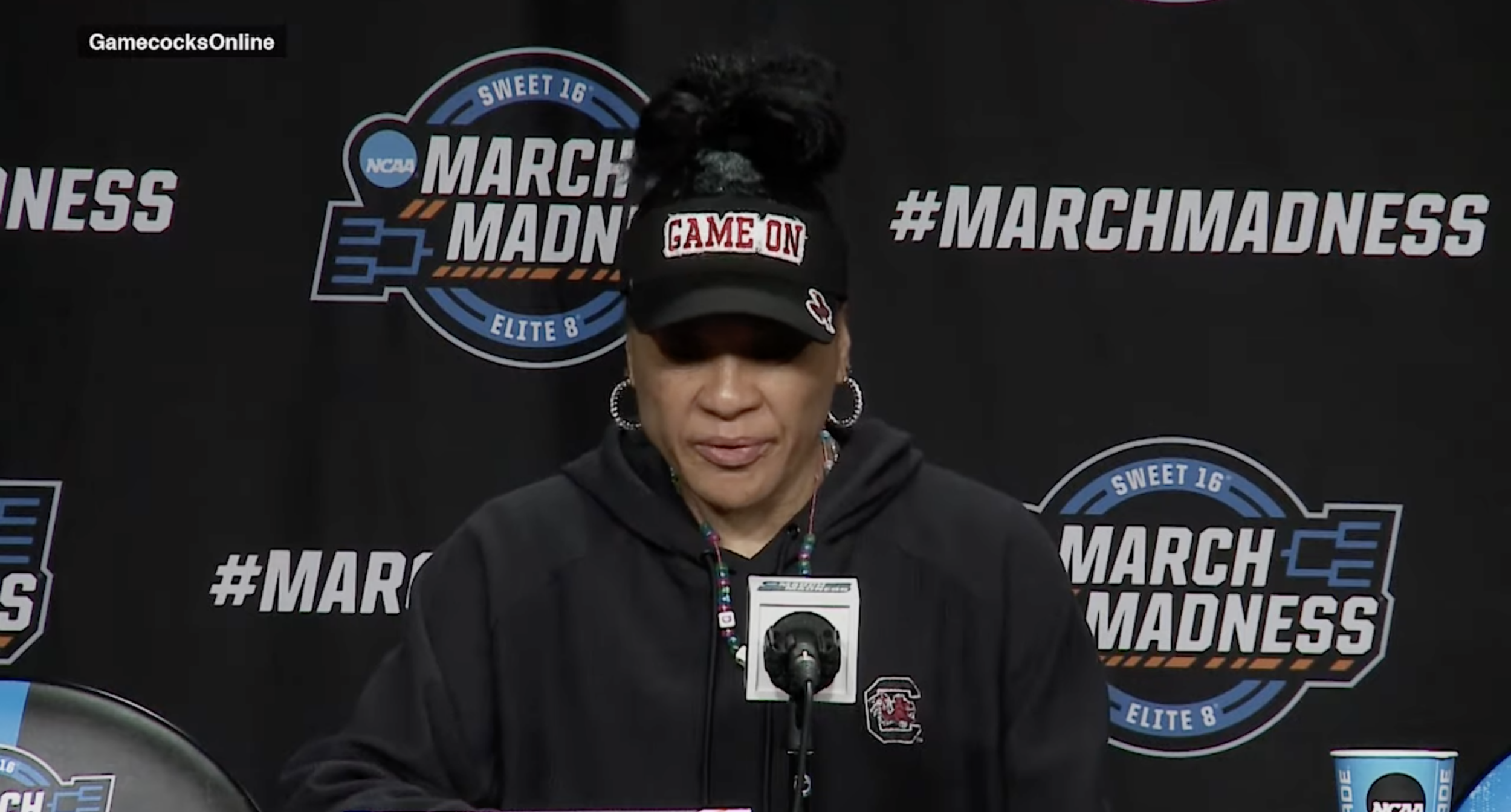
(Elite Eight) Dawn Staley Media Availability
South Carolina Head Coach Dawn Staley met with members of the media on Saturday; As the Gamecocks prepare for Sunday's Elite Eight matchup against Oregon State.
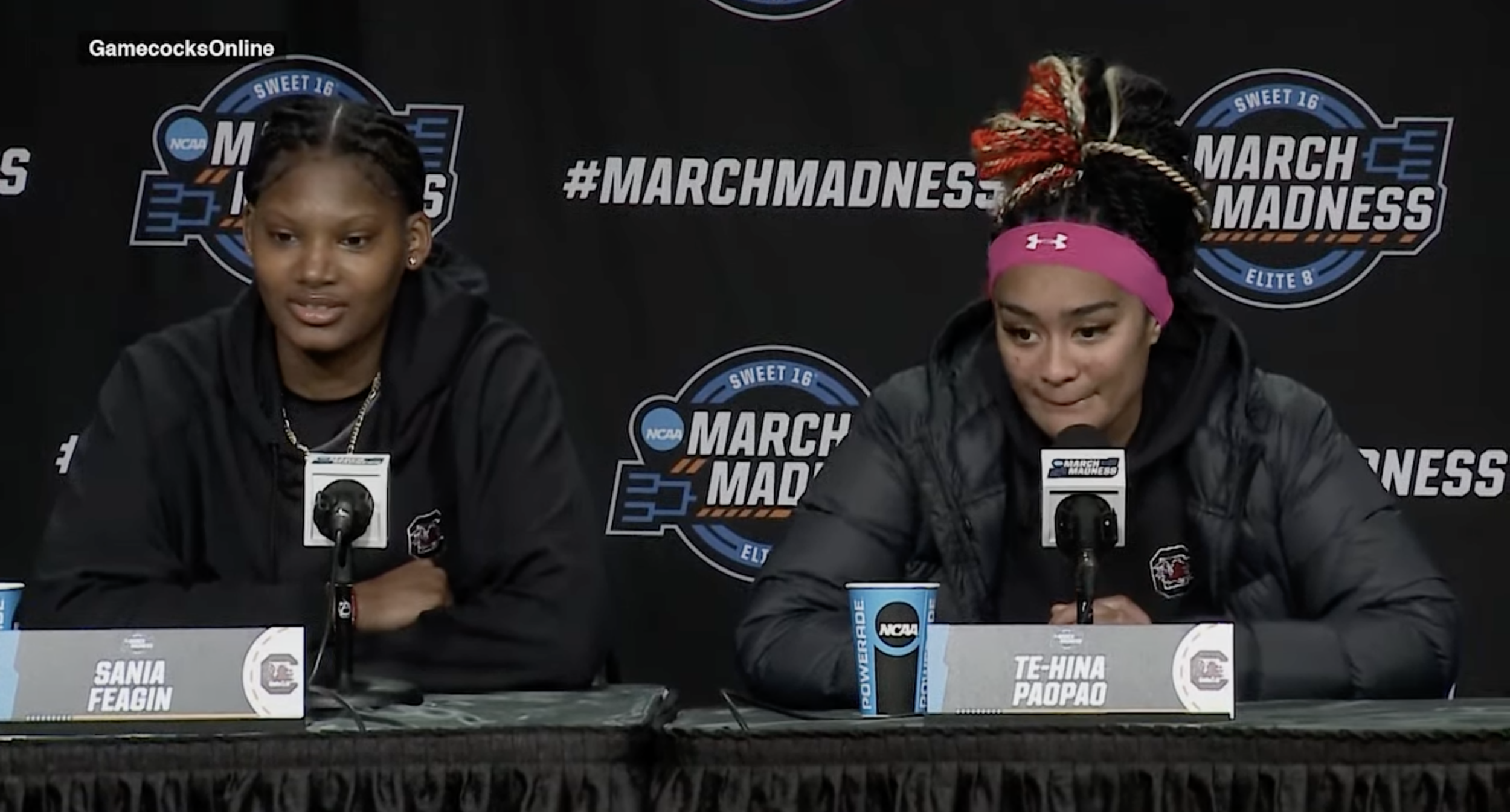
(Elite Eight) Sania Feagin and Te-Hina Paopao Media Availability
South Carolina Junior Forward Sania Feagin and Senior Guard Te-Hina Paopao met with members of the media on Saturday; As the Gamecocks prepare for Sunday's Elite Eight matchup against Oregon State.
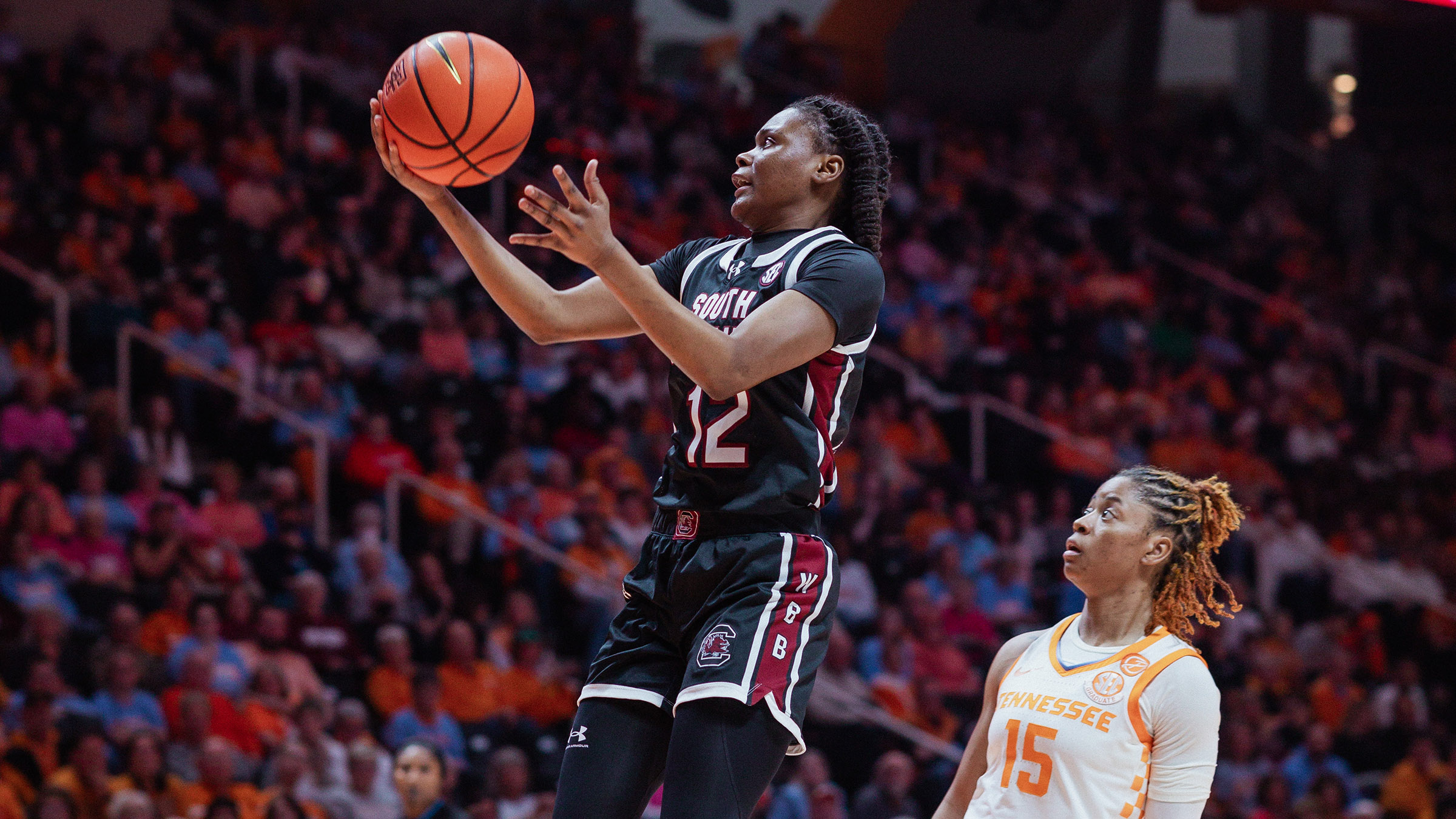
Gamecocks Face Oregon State Sunday in Elite 8

Who is in the women's Final Four? Latest March Madness bracket results and updates

The Elite Eight is coming to a close, which means we get to now prepare for the women's Final Four .
No. 1 South Carolina headlines what is sure to be an unforgettable and action-packed weekend. A tournament of bracket busting and classic moments is coming to a close.
We now wait to see whether it will be Caitlin Clark or Angel Reese taking on either of two seemingly unbeatable teams in USC or UConn. Monday will go a long way to showing us how all of this drama ends.
Here is what you need to know to catch all of the action of women's March Madness as the Elite Eight concludes.
March Madness: Iowa and LSU meet again, this time in Elite Eight. All eyes on Caitlin Clark, Angel Reese
FOLLOW THE MADNESS: NCAA basketball bracket, scores, schedules, teams and more.
Who is in the women's Final Four?
No. 3 NC State vs. No. 1 South Carolina - Friday, April 5 at 7:00 p.m. ET
No. 3 UConn vs. No. 1 Iowa - Friday, April 5 at 9:00 p.m. ET
Women's Elite 8 results
No. 1 South Carolina 70, No. 3 Oregon State 58
No. 3 NC State 76, No. 1 Texas
No. 1 Iowa 94, No. 3 LSU 87
No. 3 UConn 80, No. 1 USC 73
Kim Mulkey: LSU women's basketball coach Kim Mulkey subjected to harsh lens that no male coach is
Milwaukee Bucks 'Hoop It Up' 3x3 basketball tour set for Aug. 16-18

MILWAUKEE - The Milwaukee Bucks and Hoop It Up announced on Monday, April 1 that the 2024 Hoop It Up 3x3 basketball tour will stop in Deer District in downtown Milwaukee from Aug. 16-18.
A news release says the three-day event featuring 3x3 tournaments for players of all ages and skill levels , including recreational divisions for ages 8-18 and adult divisions for all levels of competition.
The weekend will be headlined by a 3x3 Pro-Am tournament, with the winning team receiving a $1,000 travel stipend to the national championship in Denver. The tour will also feature a slam dunk contest and three-point contest.
RELATED: Check out the new and improved FOX Sports app
Teams of three to five players are encouraged to register for the event. Each team will play at least three games in the tournament, with each game played to 21 points. Interested teams can register until Aug. 16 .

IMAGES
COMMENTS
Traveling in basketball is a violation that regularly confuses people. This isn't all that surprising considering the rule is slightly different at the top level of basketball. Unsurprisingly, this leads to frequent debates about whether a specific move is or is not a travel.
Failure to rid themselves of the ball before landing will result in an "up and down" traveling violation. 4. Rolling or standing up with the ball: This example is common in lower-level basketball leagues, in which loose ball scenarios are more frequent. When neither team has possession of the ball, it is a live ball.
Basketball Traveling Rules. Traveling is a violation in basketball that occurs when a player takes too many steps without dribbling the ball. The usual rule of thumb is that a player may only take two steps without dribbling; three or more steps is a travel. However, in reality, this rule is much more complicated. Table of Contents.
Traveling (basketball) In basketball, traveling is a violation that occurs when a player takes too many steps without dribbling the ball. Traveling is also called, predominantly in a streetball game, "walking" or "steps". If the pivot foot is lifted, the player must make an attempt at a pass or a basket, before it is placed back onto the floor.
Here are some of the common illegal movements that constitute a traveling violation in most basketball leagues. Lifting of the pivot foot if one has been established.and returning it to the floor before passing or shooting. Lifting of the pivot foot before releasing the ball to dribble. Lifting both feet from the floor (jumping) and returning ...
Traveling in basketball is one of the most discussed and often misunderstood rules in the game. At its core, traveling is defined as the illegal movement of one or both feet while a player is in possession of the ball. This violation is most commonly observed when a player takes more than the allowed number of steps without dribbling the ball.
Traveling in basketball is when a player illegally moves with the ball without proper dribbling. Only a player with the ball can be called for travel. A traveling violation results in a turnover, and the ball is awarded to the other team. Traveling in basketball is a violation that shapes a team's offensive efficiency and the game's flow.
The NBA Travel Rule and the Eurostep (with Video) Traveling is one of the most common -- and misunderstood -- rules in the NBA and all of basketball. The traveling call is intended to prevent players from gaining an advantage by moving with the ball without dribbling. Traveling is a violation in basketball and is penalized by awarding the ball ...
When with the team, the coach lines up the players at the baseline about five feet apart. When the whistle blows, the players start running towards half-court. Players then perform the jump shot on the second whistle. While they're doing that, the coach yells out a foot and direction to pivot on.
Traveling in basketball is a violation that occurs when a player, while holding the ball, moves one or both of their feet illegally. This typically happens when a player takes more than the allowed two steps without dribbling or when they change their pivot foot. When traveling is called, the opposing team gains possession of the ball.
Traveling in basketball is a violation. It's when a player dribbles the ball and takes too many steps without dribbling or passing it to another teammate. This traveling violation can also be called when the offensive player has taken several steps after starting to dribble. Basketball traveling can also be defined as an infraction, where ...
Travel on the perimeter, axis travel, slides and re-positions pivot foot. January 26, 2024.
Traveling is a violation called when a player illegally moves one or both feet while holding or dribbling the ball beyond the allowed steps. A typical example of traveling is a player who steps three times after gathering the ball. There are different traveling rules in various leagues today. Now, let us explore what traveling is and how to ...
4. Taking more than two steps while moving. Traveling can also occur when a player receives the ball while moving. A player can catch the basketball on the run and take two steps before stopping, passing, or shooting. There are times when a player takes a third step. That is a traveling violation.
In this video, learn how traveling is committed and penalized in a basketball game and how you can avoid it!Check out our other basketball videos for more gr...
Basketball travel is a very simple concept that any basketball player should know. This is a foul in basketball. Basically, a traveling violation occurs when you move with the ball without dribbling. However, if you dig deeper into it, you will find that it is more complicated. Here are three common cases where many players often break the rule ...
A travel in basketball refers to a violation where a player takes excessive steps while holding the ball without dribbling it. In essence, it's a breach of the rules that aim to maintain fairness and uphold the fundamental principles of the game. When a player travels, they gain an unfair advantage by covering more ground than allowed ...
A carry can result in a travel call in a basketball game. For example, if a player is dribbling with the ball up the court, they have their hand at the top of the ball. However, if they put their dribbling hand under the ball while moving with it, it will result in a travel violation. If a player puts their hand under the ball, they must either ...
Travel basketball is a different type of basketball: it isn't like your normal high school basketball or your rec leagues, and it is very intense and competitive. You could have the country's best players on a team, and they could still lose by 20; you never know the outcome, you just play until the buzzer sounds.
Travel basketball teams incur various expenses as mentioned above. Seek out potential sponsors or partners who can contribute financially or provide in-kind support. Local businesses, sports organizations, or even parents of team members might be willing to contribute.
Travel basketball is a competitive basketball program for youth of all ages who want to compete at a higher level. Travel teams consist of talented players who typically "travel" to other cities and states to compete in weekend tournaments. Playing travel basketball allows youth basketball players and teams an opportunity to develop their ...
Joining a travel basketball team or an AAU club doesn't just require time and dedication - you've also got to consider the fiscal responsibilities. Let's break it down. Travel basketball costs might seem more manageable at first glance. You typically pay for the team fee, uniforms, and sometimes, a small contribution to the coach's ...
This is the schedule for the 2024 NCAA women's basketball tournament for March Madness. Elite Eight action continues on Monday, April 1. Selection Sunday: 8 p.m. ET Sunday, March 17 on ESPN. First ...
LOS ANGELES - The Alabama men's basketball team made history Saturday night in Crypto.com Arena, as the No. 4 seed Crimson Tide reached the program's first-ever Final Four, defeating No. 6 seed Clemson, 89-82, in the NCAA Men's Basketball Tournament Elite Eight.. Mark Sears, who was named the West Region Most Valuable Player, led five UA players in double figures, finishing with a game high ...
ALBANY, N.Y. (AP) — Tessa Johnson scored 15 points, Kamilla Cardoso added 12 and undefeated South Carolina advanced to the Final Four of the women's NCAA Tournament with a 70-58 win over Oregon State on Sunday. South Carolina made it to the national semifinals unbeaten for the second straight season. The Gamecocks lost to Caitlin Clark and Iowa in the Final Four last year.
Monday will go a long way to showing us how all of this drama ends. Here is what you need to know to catch all of the action of women's March Madness as the Elite Eight concludes. March Madness ...
The Utah women's basketball team had to switch hotels after experiencing what head coach Lynne Roberts called "racial hate crimes" ahead of its first NCAA tournament game.. According to ...
The weekend will be headlined by a 3x3 Pro-Am tournament, with the winning team receiving a $1,000 travel stipend to the national championship in Denver. The tour will also feature a slam dunk ...